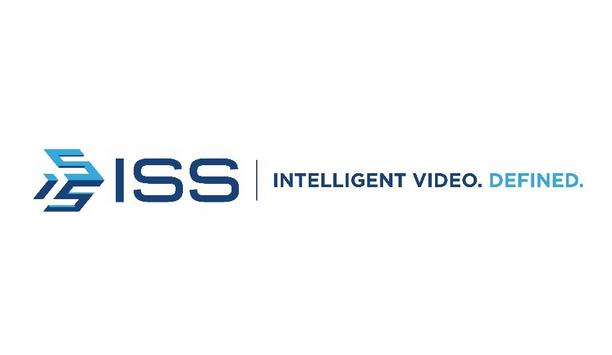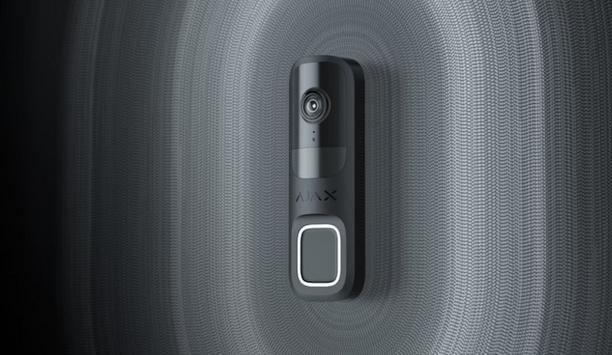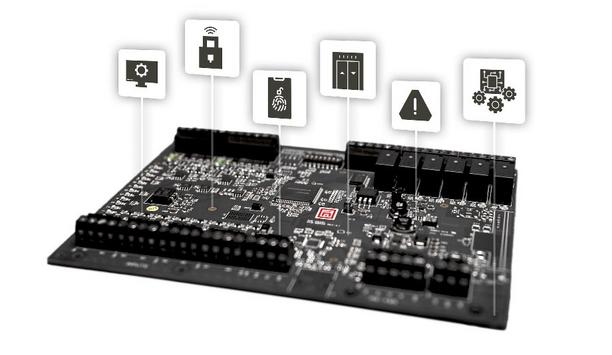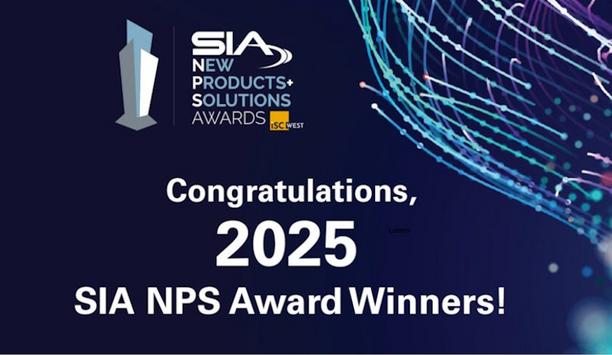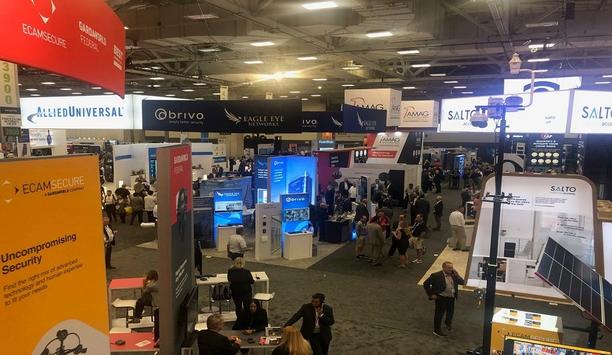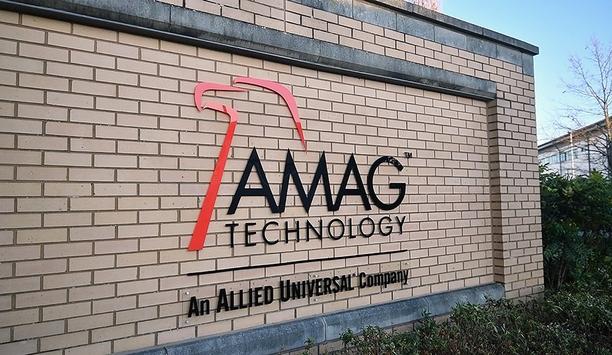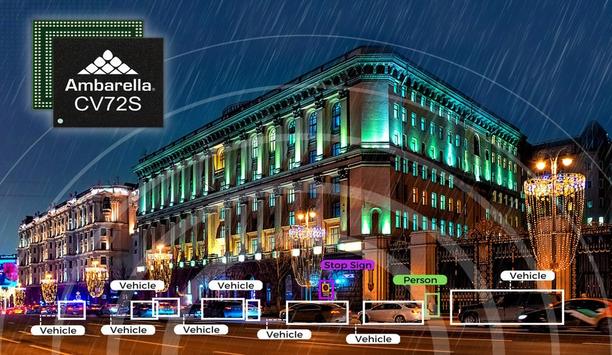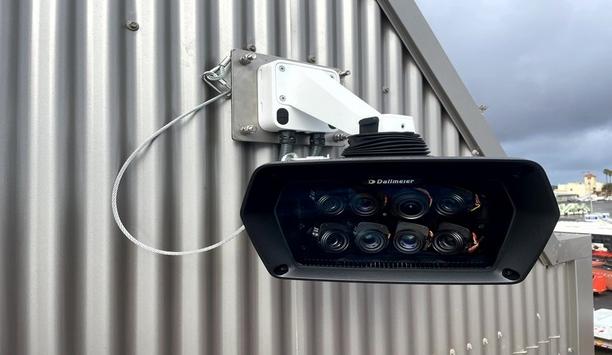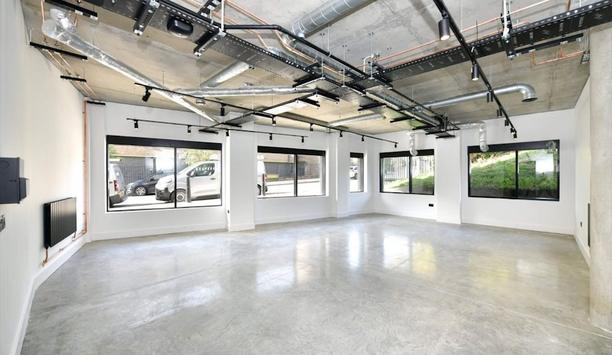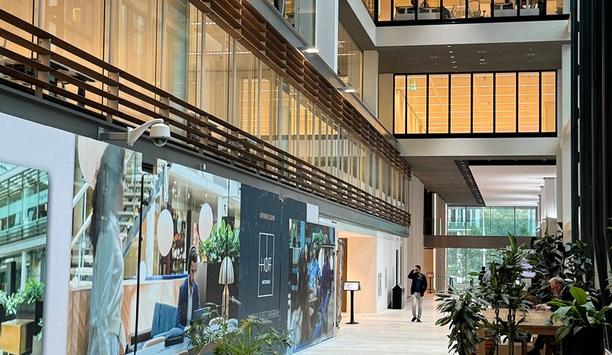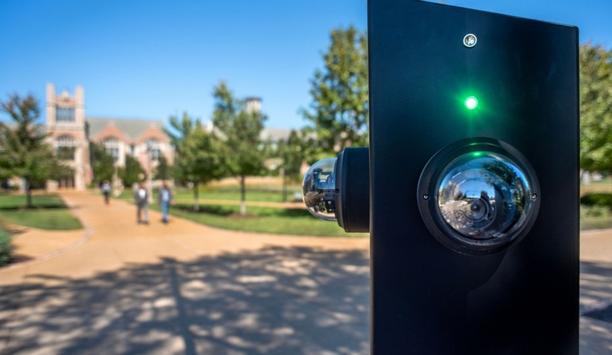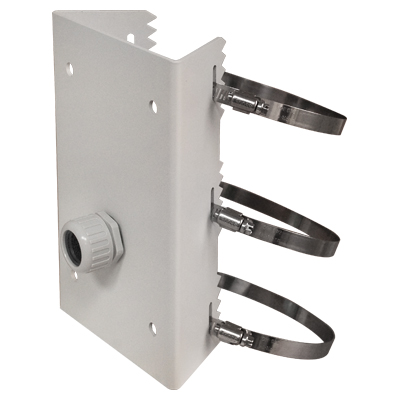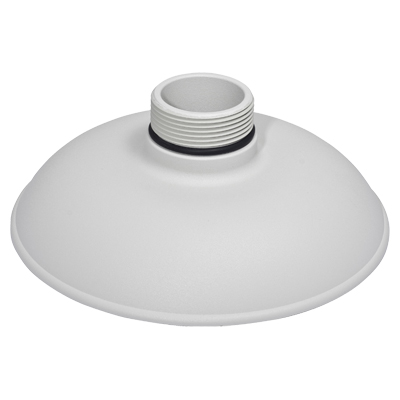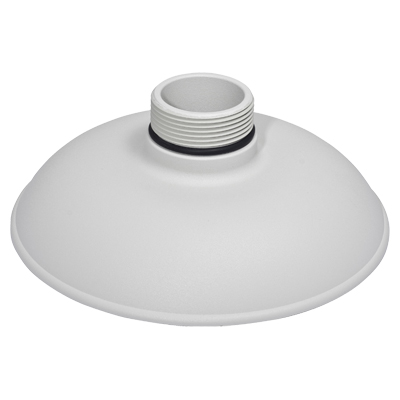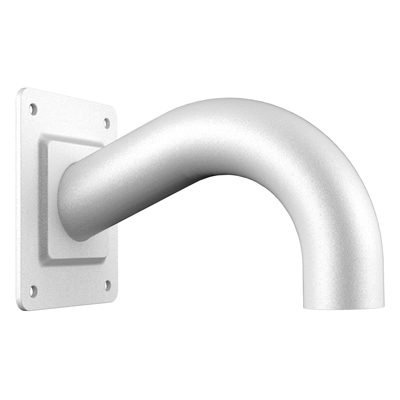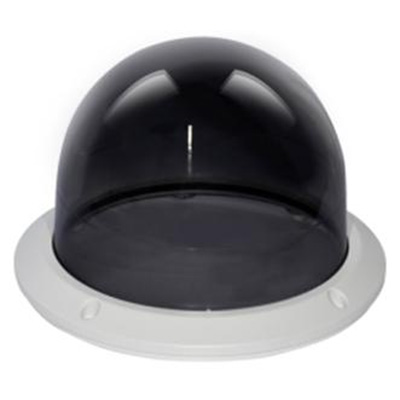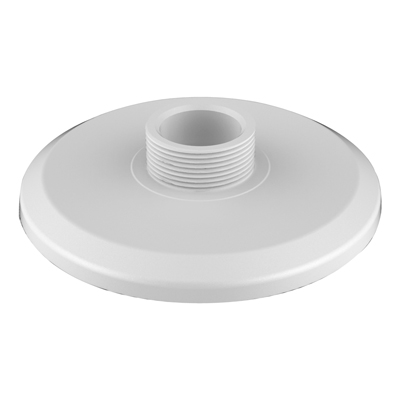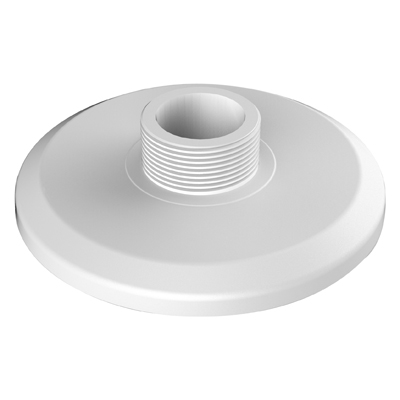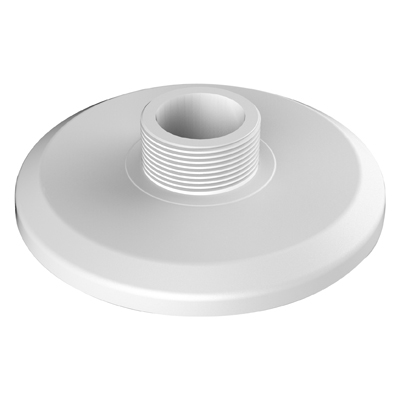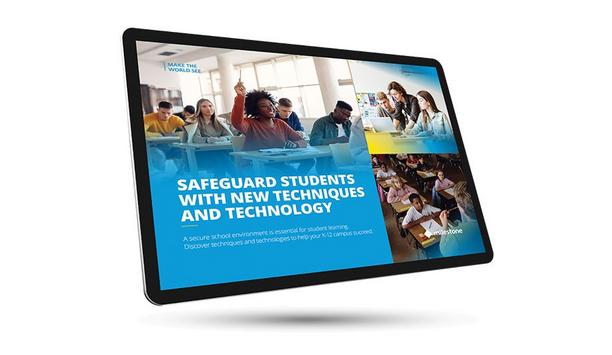Security installation
Camden Door Controls has introduced the industry's first 1/2" RIM Strike with 15 lbs. preload. Camden 1299 Series strikes are Grade 1 rated, with UL 1034/294 and ANSI/BHMA listings. Available in brushed stainless steel or black finish, these 1299 strikes offer 'Universal' performance with selectable 12/24V, AC/DC voltage, and fail-secure/fail-safe operation. Latch monitor included. 1299 Series Preload RIM strikes 1299 Series strikes are packaged with 1/8" and 1/4" spacer plates to accommodat...
Mission 500, the security industry's non-profit charity dedicated to supporting children in need across the US, Canada, and Puerto Rico, ended ISC West 2025 on a high note with its annual awards ceremony, which celebrated individuals and organisations making a meaningful impact through service and philanthropy. The Mission 500 Awards Ceremony took place on Thursday, April 3rd, at The Bridge within the ISC West exhibit hall. This year’s Mission 500 Humanitarian Award was presented to...
ISS (Intelligent Security Systems), a pioneering provider of video intelligence and data awareness solutions, is proud to announce that our SecurOS® UVSS (Under Vehicle Surveillance System) is now listed on GSA Advantage, an online purchasing platform for U.S. General Services Administration (GSA) Schedule contracts. This milestone simplifies procurement for federal agencies, and it also underscores the commitment to providing advanced video intelligence solutions to the government se...
Increasingly, customers see access control and security systems as integral to their premises. As a result, they expect the same attention to detail and design principles they find in other building products, in both the commercial and the residential sector. The industry needs better design thinking to meet these changing demands. ‘Product design’ of course has always encompassed more than aesthetics. An access solution’s performance and any potential ROI for adopters will be...
In many cases, architectural design and layout dictate optimal placement of security devices like cameras, access control readers, and sensors. Poor design can lead to blind spots, reduced coverage, and ineffective surveillance. However, planning that involves all the various stakeholders can maximise both security and design elements. We asked this week’s Expert Panel Roundtable: When are building design and physical security systems complementary? When are they at odds?
The Security Industry Association (SIA) has announced its new Board of Directors chair-elect and presented its new and returning members to the SIA Board of Directors on April 1 at The Advance, SIA’s annual membership meeting, and the following Board of Directors meeting during ISC West. The SIA Board of Directors ratified the selection of Mike Mathes, executive vice president (EVP), western operations at Convergint and former treasurer of the SIA Board of Directors, as SIA...
News
At ISC West, trusted security brands Yale and Master Lock announced their newest lines of smart locks for businesses and multi-family facilities. Part of Fortune Brands Innovations, Inc., Yale and Master Lock are expanding their professional portfolios to offer a new level of security and convenience for multi-family properties, offices, schools, healthcare facilities, small and medium businesses, and more. Product lines under Yale and Master Lock “By launching these new product lines under Yale and Master Lock, we are poised to serve a greater share of the professional market,” said Dave Barry, President of Security & Connected Products at Fortune Brands. “Yale is continuing its legacy of providing flexible solutions for multi-family environments, simplifying access decisions for our partners and operators. Master Lock is delivering solutions to secure access for essential places like schools, healthcare facilities, small and medium businesses, and more.” Key features of Yale’s new multi-family product Yale’s multi-family product line will serve partners and operators with innovative and flexible Yale’s new multi-family product line will serve partners and operators with innovative, flexible, and scalable access control solutions. Designed to enhance security at every entrance, the Yale Pro® 2 Interconnected Lock, Yale Pro® 2 Mortise Lock, and Yale Pro® 2 Cylindrical Lock include key features such as: Flexible Connectivity: With Yale’s range of technology offerings, multi-family properties can choose between: Z-Wave (800 series) module offering long-range support and SmartStart Zigbee module offering app compatibility with top smart home partners Wi-Fi module offering remote access and easy app management Single Action Egress: Meeting all code requirements, multi-family apartment doors can be unlocked in one motion, all with top ANSI/BHMA grading and 90- to 190-minute fire ratings (fire ratings vary by model). Tamper-Proof: Each product is available as a key-free model to provide convenient, keyless access for residence doors—so they can’t be picked, there are no keys to lose, and installers save money by no longer having to address tenant lockouts or rekey apartments after residents move out. Award Winning Design: Modeled after Yale’s award-winning residential product line, Yale Assure Lock® 2, the new multi-family product line features seamless pairing for apartment buildings, no matter what lock style is chosen for apartment or common area doors. Key features of Master Lock Master Lock is also unveiling a new line of locks designed for commercial applications Master Lock is also unveiling a new line of locks designed for commercial applications. The Master Lock Electronic and Connected Mortise Locks and the Master Lock Electronic and Connected Cylindrical Locks offer more advanced access management and tracking, providing commercial owners the confidence that their properties are protected. The introduction of these new products will expand Master Lock’s renowned brand applications to include schools, healthcare facilities, small and medium businesses, and more. Key features include: Flexible Connectivity: With different technology offerings, installers can choose the right technology for their customers, including: Z-Wave (800 series) module offering long-range support and SmartStart Zigbee module offering app compatibility with top smart home partners Non-connected (no module) offering keypad access only Convenient, Key-Free Access: Control access to common areas, exterior doors, residence doors, and stairwells to enhance facility security with access control at every opening. Options for Every Door: Product options are available for standard cylindrical or mortise door prep, and offer top ANSI/BHMA Grade 1 and a 180-minute fire rating. These products will be available for customers to order later this year. Attendees at ISC West can learn more about how Yale and Master Lock are creating safer multi-family housing and businesses at booth #24131.
The security technology manufacturer Paxton is now hosting Paxton Tech Tour sessions at the company’s newly built US headquarters in Greenville, South Carolina. The Paxton Tech Tour is a free half-day commercial and technical experience that introduces security installers and integrators to Paxton’s extensive security product line. Featuring live demos, hands-on product experience, exclusive access to discounted products and free software, installers won’t want to miss it. Tech tour insights Gareth O’Hara, Chief Commercial Officer of Paxton, commented: “We are delighted to be welcoming installers to our brand-new US headquarters. It has been built to a world-class standard and reflects the scale of our ambition and belief in Greenville as a fantastic hub for Paxton." “Installers that attend the tech tour get a combination of commercial and practical sessions designed to help grow their business. There’s something for everyone, from technical experts to business owners. It is the perfect chance to discuss business opportunities with our team and plan upcoming installations.“ Smart access solutions Attendees will get to check out the latest Net2 developments, discover the combined video and access control platform Attendees will get to check out the latest Net2 developments, discover the combined video and access control platform Paxton10, learn about PaxLock wireless electronic doors handles, and experience Paxton’s video intercom system Entry with the recently released Paxton Entry app. Every installer who attends will receive $765 MSRP Net2 Pro software for free and an exclusive installer gift box worth over $50. Additionally, attendees will gain access to heavily discounted Paxton demo equipment, enhancing their ability to demonstrate Paxton’s products to potential customers. Exclusive installer perks Each security installation company that attends will receive 100 Paxton Rewards points, which can be redeemed for various benefits. They’ll also get a free catered lunch and a tour of Paxton’s new, state-of-the-art headquarters. Furthermore, they’ll have the opportunity to explore the Customer Experience Room, a space where installers can showcase Paxton products through live demonstrations to their own customers.
The company announces the release of Ajax DoorBell, with built-in AI, IR sensor, and app control. Ajax DoorBell sets a new standard for the video doorbell experience by combining uninterrupted operation with advanced security features. The device is seamlessly integrated into the Ajax ecosystem and guarantees exceptional efficiency and security confidence. The Doorbell is available for order now. Professional security at the front door DoorBell flawlessly performs its primary function: welcoming guests without making them wait DoorBell flawlessly performs its primary function: welcoming guests without making them wait. As soon as a visitor rings the doorbell, an Ajax user receives a notification, sees who’s at the door, and can start a conversation via an Ajax app. No delays or freezing—proprietary Ajax technologies ensure a clear and seamless exchange on both sides. The DoorBell also functions as a vigilant security camera: it notifies about the movement of people, animals, or vehicles, and records video on the Ajax NVR or Ajax Cloud Storage, which will soon be available among Ajax services. The device also informs security companies even without Wi-Fi–via the Ajax hub. High-image quality image and two-way audio communication Ajax DoorBell offers excellent image quality. It has a 4 MP CMOS camera sensor with HDR technology and IR illumination at a distance of up to 6 metres, so the image is always clear regardless of lighting conditions. The video doorbell implements the company's proprietary solutions for noise and echo cancellation, and it has a significantly higher volume level compared to other devices on the market. AI-driven object recognition The video doorbell has a built-in AI that recognises people, animals, and vehicles. Users can customise detection and receive notifications for all or only a specific type of object. Enhanced Wi-Fi connection with a reliable backup DoorBell is still connected to the Ajax hub thanks to the fallback communication channel The main communication channel is Wi-Fi with a range of up to 500 metres in the absence of obstacles, and up to 30 metres even through concrete walls. This is more than enough for stable operation, for example, in a large private home. For installers, this means less installation hassle, as there’s no need to position the router directly near the entrance. Even if Wi-Fi fails, DoorBell is still connected to the Ajax hub thanks to the fallback communication channel – the Jeweller and Wings radio protocols. Both proprietary protocols are designed to detect interference and jamming, with built-in frequency hopping for enhanced protection. Instant access to footage Thanks to JetSparrow's proprietary video protocol, video is instantly transmitted from the device directly to Ajax applications with minimal delay. This also guarantees data confidentiality, as no third parties are involved in the process. Functionality without aesthetic compromises DoorBell is designed with both function and aesthetics in mind. DoorBell’s compact enclosure fits in the tightest spaces, such as narrow door frames or wall-adjacent doorways. Its minimalist design, available in four neutral colours, complements any exterior. Additionally, a coloured LED ring around the button adds a stylish yet functional element: it guides users and indicates the current state of the device.
At ISC West 2025, April 2-4, in booth 11053, they are launching a reintroduction of the name Radionix, a fresh take on a classic brand that is synonymous with innovation and trust in the intrusion security market. Radionix will debut as the new product portfolio name for the company’s line of intrusion panels and its intrusion ecosystem of products. This strategic move to reintroduce Radionix will be a central component of the marketing initiatives around the G Series control panels and our dedication to providing cutting-edge security solutions. Renowned security systems Radionix will debut as the new product portfolio name for the company’s line of intrusion panels “I’m thrilled to reintroduce the Radionix name as the symbol of our renowned security systems portfolio," said Gregor Schlechtriem, Senior Vice President, Global Business Unit Head for Intrusion and Access Products. "This milestone reflects our pride in our heritage and confidence in our expertise while marking the start of a new era of innovation and evolution in the products and services we deliver to our customers.” The value of Radionix: A name they can trust The Radionix name holds a special place in the hearts of dealers, distributors, and customers alike across the United States and Canada. The new Radionix vision is “Mission control, for your security.” This statement encapsulates their focus on empowering users with a system that seamlessly integrates every layer of security. With Radionix, they believe security is more than a system. It’s a mission that never rests—always on guard, so the people and assets users care about are always protected. G Series: Seriously protective Radionix G Series control panel goes beyond sounding an alarm to next-level security For companies serious about protecting their team, space and assets, the Radionix G Series control panel goes beyond sounding an alarm to next-level security they can feel—day and night. Radionix G Series is the business partner in protection, designed to seamlessly connect and integrate every component of the alarm system with round-the-clock monitoring, instant alerts and control in the palm of the hand. Integration is critical in providing smarter, faster and more reliable data to end users in real time. That's why they make sure it’s at the heart of what they do, bringing intrusion, fire alarm and access control all in one centralised place with Radionix G Series. Radionix G Series control panel at ISC West 2025 Connecting every component of the system to automatically arm, disarm, or alert them of activity, their building works smarter with the Radionix G Series control panel to help them save time, reduce costs, and eliminate worry. From the moment they open their doors to the last person leaving and every hour overnight, Radionix G Series is seriously protective. For safety beyond intrusion, trust beyond compare. For details on these solutions and more, visit ISC West booth 11053.
Mercury Security, the pioneer in open architecture access control hardware, is launching a new addition to its industry-defining controller platform—the Mercury embedded application environment, an open platform that enables technology partners and OEMs to develop and deploy custom applications directly on Mercury MP Controllers. “We have a lot of exciting things happening at Mercury,” said Steve Lucas, vice president of sales at Mercury Security. “We are excited to show customers the Mercury embedded application environment running on Mercury MP Intelligent Controllers, along with a range of new solutions targeting the platform. We’re giving our partners the ability to develop directly on the controller, unlocking new levels of system intelligence at the edge.” Traditional access controllers Unlike traditional access controllers that rely on server-based logic and are limited in upstream system connections, this platform brings real-time logic processing to the edge—reducing latency, increasing availability and enhancing system redundancy. By shifting intelligence closer to the door, the platform improves system responsiveness, minimises network dependency and enables advanced operational features. It also simplifies interoperability, seamlessly integrating controllers, IoT devices, elevators, readers, locks and more. Access control and IoT ecosystem Mercury embedded application environment delivers unmatched flexibility For access control and IoT ecosystem stakeholders who need a secure, scalable and customisable platform, the Mercury embedded application environment delivers unmatched flexibility—supporting third-party app integration and enabling custom business logic to run directly on the controller. Instead of just linking a reader to a management system for access decisions, Mercury controllers act as a nexus, integrating multiple systems and devices for broader functionality and stronger performance. Intelligent security systems “The access control industry is shifting toward more decentralised, intelligent security systems,” said Daniel Gundlach, vice president, head of Physical Access Control Solutions business unit in North America at HID. “Our embedded application environment gives our partners the tools to build smarter, more adaptable solutions that align with today’s challenges and tomorrow’s opportunities.” Key launch partners and apps Mercury is showcasing the broad capabilities of its embedded application environment in collaboration with key launch partners and their certified apps: ASSA ABLOY HES KS210 OSDP Access Control Server Cabinet Lock: With the Mercury KS210 device app, OEMs can now quickly & easily add support for up to 32 KS210 OSDP server cabinet locks without the need to build custom integrations. HID pivCLASS: Enables pivCLASS support on Mercury MP Intelligent Controllers, adding PKI-based authentication at the door to meet security standards required in government facilities and other regulated industries. SecuriThings: This system-class app simplifies security audits by discovering devices on the network and generating detailed reports on their status, including firmware versions, host connectivity and other key security metrics. Viakoo: This SaaS application maintains system health across CPS environments, such as physical security. System reliability is ensured with real-time monitoring, vulnerability identification, lifecycle data, and other critical details. Viakoo takes action to remediate vulnerabilities with firmware updates, password rotations, and certificate management. New standard in access control Mercury MP Controllers quickly set a new standard in access control, offering unprecedented flexibility Launched in June 2024, Mercury MP Controllers quickly set a new standard in access control, offering unprecedented flexibility. These controllers are the foundation for the Mercury embedded application environment, enabling software providers and integrators to seamlessly combine access control technologies, elevator control, building automation, IoT applications and third-party solutions into a unified, centralised infrastructure. This flexible approach eliminates vendor lock-in and provides the freedom to choose the right solution for specific customer requirements while future-proofing investments. OEMs and integrators Mercury Security, an HID company, has pioneered flexible hardware solutions that empower OEMs and integrators to create best-in-class systems for over 30 years. Mercury MP Controllers support a wide range of consistent standards, including OSDP, MQTT and TLS, ensuring interoperability across access control, building automation and IoT applications. The Mercury embedded application environment is available for developers now.
The Security Industry Association (SIA) has announced the 2025 winners of the SIA New Products and Solutions (NPS) Awards, the flagship awards program presented in partnership with ISC West, recognising innovative security products, services, and solutions. Top among the winners, who were recognised April 2 during an award ceremony at the Bridge Stage on the ISC West show floor, was Vaidio, receiving the 2025 Best New Product Award. SIA NPS product and service categories SIA NPS has been the security industry’s premier product awards program Since its inception in 1979, SIA NPS has been the security industry’s premier product awards program. New products are reviewed by a panel of judges with extensive industry experience, and in 2025, following significant deliberations, the 38 judges presented awards for technologies covering 33 product and service categories. The 2025 SIA NPS Awards entries will be on display through Friday, April 4, in Booth #25075 on the ISC West show floor, adjacent to the Bridge Stage (Booth #25059). Vaidio 9.0 advanced models Vaidio received the Best New Product honor for its Vaidio 9.0 AI Vision Platform product, submitted in the Loss Prevention and Article Surveillance Solutions category. “Vaidio 9.0 enhances loss prevention by combining advanced (artificial intelligence) models, heuristic rules and intelligent compute management to deliver precise analytics for detecting theft and reducing inventory shrinkage,” said Vaidio. “Its unique orchestration of CNN, transformer and VLM models increases accuracy, reduces compute consumption and improves speed, while integrating seamlessly with existing infrastructure.” AI-driven engagement The prestigious Judges’ Choice Award was presented to RAD for the SARA The prestigious Judges’ Choice Award was presented to Robotic Assistance Devices (RAD) for the SARA – AI Security Agent for Autonomous Threat Detection and Response product, submitted in the Threat Detection and Response Solutions category. “SARA revolutionises (global security operations centers) and monitoring by transforming passive surveillance into real-time, AI-driven engagement,” said RAD. “This autonomous security agent detects threats, interacts with individuals, verifies intent and escalates incidents as needed, enhancing security efficiency, reducing operator fatigue, preventing overlooked events and ensuring faster, smarter and more effective incident response across diverse environments.” Amazing new products and solutions “This year’s SIA NPS program has had another fantastic year with amazing new products and solutions presented to our judging panels,” said Christine Bergeron, chair of the SIA NPS Awards Committee and senior director of global physical security technology at Visa. “Thank you to our expert judges and committee members for your dedication to the program and lending your expertise and valuable time to contribute to a successful 2025 SIA NPS program.” Advancement of SIA and the security CyberLock received the NPS Merit Award, which admits an person or company who, through their support of SIA “The SIA NPS Awards are a renowned global platform for highlighting new offerings each year, and earning recognition is an impressive accomplishment,” said Elisa Mula, vice chair of the SIA NPS Awards Committee and founder and protection management specialist at EM Designs. “SIA applauds this year’s winners, who impressed our judges after an extensive process of tech demonstrations and panel-driven judging.” Additionally, CyberLock received the NPS Merit Award, which recognises an individual or company who, through their support of the SIA NPS Awards, demonstrates a commitment to the vision and mission of the program, contributes to its success and promotes the advancement of SIA and the security industry overall. New security technology solutions “SIA congratulates all the winners of the 2025 SIA NPS Awards, and especially Vaidio and Robotic Assistance Devices, whose products stood out among the entries to earn the Best New Product and Judges’ Choice distinctions, as well as SIA NPS Merit Award winner CyberLock,” said SIA CEO Don Erickson. “Each year, NPS presents the most cutting-edge products available on the market today, and our judges’ dedication, support and thorough consideration are invaluable in maintaining it as the most trusted awards program for launching new security technology solutions.” 2025 SIA NPS award winners Best new product award Winner: Vaidio – Vaidio 9.0 AI Vision Platform Judges’ choice award Winner: Robotic Assistance Devices – SARA – AI Security Agent for Autonomous Threat Detection and Response SIA NPS Merit award Winner: CyberLock Category awards Access Control Devices & Peripherals Hardware – Wireless Winner: Sure-Fi – Sure-Fi Access Pro Bridge Access Control Software, Hardware, Devices & Peripherals – Wired Winner: Safetrust – IoT Neural Sensor Honorable Mention: Accessia – Accessia Reader Antiterrorism/Force Protection/Armed Aggressor Winner: Xonar Technology – TruePort Biometrics Winner: Intel RealSense + Ones Technology – BioAffix Gate Vision Powered by Ones Technology and Intel RealSense ID F450 Communications and Networking Solutions Winner: Commend Americas – Ivy Live Translation – Ivy Virtual Assistant’s Multilingual Real-Time Translation Capabilities, Part of Commend’s Symphony Cloud Solution for Security Communication Convergence and Integration Solutions Winner: AURA – AURA Auto Guard Dispatch Data and Systems Cybersecurity Winner: SWEAR – SWEAR Security Design, Diagnostic and Installation Tools Winner: dormakaba – EntriWorX Insights Enhanced Project Delivery Winner: Vaidio – Vaidio 9.0 Environmental Monitoring Systems Winner: XSponse – X-Shield Honorable Mention: Secure Passage – Truman Fire/Life Safety Winner: Honeywell – Connected Life Safety Services (CLSS) Compliance Manager With Auto-Pass Honorable Mention: Honeywell – CLSS Cloud-Connected Horizon Identification Management and Credentialing (Nonbiometric) Winner: Wavelynx, rf IDEAS and Idemia (Founding Companies of LEAF Community) – LEAF Community Intrusion Detection and Prevention Solutions (Physical) – Wired or Wireless Winner: SPOT AI – SPOT AI Remote Security Agent Honorable Mention: Hexagon – HxGN dC3 LidarVision Key/Equipment Assets Management Solutions Winner: CyberLock – ValidiKey Pro Law Enforcement/Public Safety/Guarding Systems Winner: 3Si Security Systems – DirectToDispatch Honorable Mention: Eagle Eye Networks – Eagle Eye 911 Camera Sharing Lock and Key Solutions Winner: dormakaba – CenconX OTC Safe Lock Honorable Mention: Securitech ASSA ABLOY – PARAMAXX Loss Prevention and Article Surveillance Solutions Winner: Vaidio – Vaidio 9.0 AI Vision Platform Managed Services Winner: ADRM – DEFENDER Honorable Mention: Allied Universal – Unified Command Center Mobile Solutions Winner: Intel RealSense + Ones Technology – BioAffix Vision Mobile Powered by Intel RealSense ID 450 Threat/Risk Management Software Applications Winner: Bearing – Bearing Honorable Mention: Sign In Solutions – Sign In Solutions – Risk Insights Threat Detection and Response Solutions Winner: Robotic Assistance Devices – SARA – AI Security Agent for Autonomous Threat Detection and Response Honorable Mention: Xtract One Technologies – Xtract One Gateway Video Analytics Winner: Lumana – Lumana Video Intelligence Platform Video Surveillance Advanced Imaging Technologies Winner: Axis Communications – ARTPEC-9 Video Surveillance Cameras Winner: Hanwha Vision America – 4CH AI Multi-Sensor Camera With WAVE VMS Powered by the NVIDIA Jetson Platform Honorable Mention: Axis Communications – AXIS Q1809-LE Bullet Camera Video Surveillance Hardware and Accessories Winner: Spectrum Camera Solutions – F200 Series Explosion-Proof Housing System Video Surveillance Management Systems Winner: Monitor Computer Systems – Sentinel
At ISC West, trusted security brands Yale and Master Lock announced their newest lines of smart locks for businesses and multi-family facilities. Part of Fortune Brands Innovations, Inc., Yale and Master Lock are expanding their professional portfolios to offer a new level of security and convenience for multi-family properties, offices, schools, healthcare facilities, small and medium businesses, and more. Product lines under Yale and Master Lock “By launching these new product lines under Yale and Master Lock, we are poised to serve a greater share of the professional market,” said Dave Barry, President of Security & Connected Products at Fortune Brands. “Yale is continuing its legacy of providing flexible solutions for multi-family environments, simplifying access decisions for our partners and operators. Master Lock is delivering solutions to secure access for essential places like schools, healthcare facilities, small and medium businesses, and more.” Key features of Yale’s new multi-family product Yale’s multi-family product line will serve partners and operators with innovative and flexible Yale’s new multi-family product line will serve partners and operators with innovative, flexible, and scalable access control solutions. Designed to enhance security at every entrance, the Yale Pro® 2 Interconnected Lock, Yale Pro® 2 Mortise Lock, and Yale Pro® 2 Cylindrical Lock include key features such as: Flexible Connectivity: With Yale’s range of technology offerings, multi-family properties can choose between: Z-Wave (800 series) module offering long-range support and SmartStart Zigbee module offering app compatibility with top smart home partners Wi-Fi module offering remote access and easy app management Single Action Egress: Meeting all code requirements, multi-family apartment doors can be unlocked in one motion, all with top ANSI/BHMA grading and 90- to 190-minute fire ratings (fire ratings vary by model). Tamper-Proof: Each product is available as a key-free model to provide convenient, keyless access for residence doors—so they can’t be picked, there are no keys to lose, and installers save money by no longer having to address tenant lockouts or rekey apartments after residents move out. Award Winning Design: Modeled after Yale’s award-winning residential product line, Yale Assure Lock® 2, the new multi-family product line features seamless pairing for apartment buildings, no matter what lock style is chosen for apartment or common area doors. Key features of Master Lock Master Lock is also unveiling a new line of locks designed for commercial applications Master Lock is also unveiling a new line of locks designed for commercial applications. The Master Lock Electronic and Connected Mortise Locks and the Master Lock Electronic and Connected Cylindrical Locks offer more advanced access management and tracking, providing commercial owners the confidence that their properties are protected. The introduction of these new products will expand Master Lock’s renowned brand applications to include schools, healthcare facilities, small and medium businesses, and more. Key features include: Flexible Connectivity: With different technology offerings, installers can choose the right technology for their customers, including: Z-Wave (800 series) module offering long-range support and SmartStart Zigbee module offering app compatibility with top smart home partners Non-connected (no module) offering keypad access only Convenient, Key-Free Access: Control access to common areas, exterior doors, residence doors, and stairwells to enhance facility security with access control at every opening. Options for Every Door: Product options are available for standard cylindrical or mortise door prep, and offer top ANSI/BHMA Grade 1 and a 180-minute fire rating. These products will be available for customers to order later this year. Attendees at ISC West can learn more about how Yale and Master Lock are creating safer multi-family housing and businesses at booth #24131.
The security technology manufacturer Paxton is now hosting Paxton Tech Tour sessions at the company’s newly built US headquarters in Greenville, South Carolina. The Paxton Tech Tour is a free half-day commercial and technical experience that introduces security installers and integrators to Paxton’s extensive security product line. Featuring live demos, hands-on product experience, exclusive access to discounted products and free software, installers won’t want to miss it. Tech tour insights Gareth O’Hara, Chief Commercial Officer of Paxton, commented: “We are delighted to be welcoming installers to our brand-new US headquarters. It has been built to a world-class standard and reflects the scale of our ambition and belief in Greenville as a fantastic hub for Paxton." “Installers that attend the tech tour get a combination of commercial and practical sessions designed to help grow their business. There’s something for everyone, from technical experts to business owners. It is the perfect chance to discuss business opportunities with our team and plan upcoming installations.“ Smart access solutions Attendees will get to check out the latest Net2 developments, discover the combined video and access control platform Attendees will get to check out the latest Net2 developments, discover the combined video and access control platform Paxton10, learn about PaxLock wireless electronic doors handles, and experience Paxton’s video intercom system Entry with the recently released Paxton Entry app. Every installer who attends will receive $765 MSRP Net2 Pro software for free and an exclusive installer gift box worth over $50. Additionally, attendees will gain access to heavily discounted Paxton demo equipment, enhancing their ability to demonstrate Paxton’s products to potential customers. Exclusive installer perks Each security installation company that attends will receive 100 Paxton Rewards points, which can be redeemed for various benefits. They’ll also get a free catered lunch and a tour of Paxton’s new, state-of-the-art headquarters. Furthermore, they’ll have the opportunity to explore the Customer Experience Room, a space where installers can showcase Paxton products through live demonstrations to their own customers.
The company announces the release of Ajax DoorBell, with built-in AI, IR sensor, and app control. Ajax DoorBell sets a new standard for the video doorbell experience by combining uninterrupted operation with advanced security features. The device is seamlessly integrated into the Ajax ecosystem and guarantees exceptional efficiency and security confidence. The Doorbell is available for order now. Professional security at the front door DoorBell flawlessly performs its primary function: welcoming guests without making them wait DoorBell flawlessly performs its primary function: welcoming guests without making them wait. As soon as a visitor rings the doorbell, an Ajax user receives a notification, sees who’s at the door, and can start a conversation via an Ajax app. No delays or freezing—proprietary Ajax technologies ensure a clear and seamless exchange on both sides. The DoorBell also functions as a vigilant security camera: it notifies about the movement of people, animals, or vehicles, and records video on the Ajax NVR or Ajax Cloud Storage, which will soon be available among Ajax services. The device also informs security companies even without Wi-Fi–via the Ajax hub. High-image quality image and two-way audio communication Ajax DoorBell offers excellent image quality. It has a 4 MP CMOS camera sensor with HDR technology and IR illumination at a distance of up to 6 metres, so the image is always clear regardless of lighting conditions. The video doorbell implements the company's proprietary solutions for noise and echo cancellation, and it has a significantly higher volume level compared to other devices on the market. AI-driven object recognition The video doorbell has a built-in AI that recognises people, animals, and vehicles. Users can customise detection and receive notifications for all or only a specific type of object. Enhanced Wi-Fi connection with a reliable backup DoorBell is still connected to the Ajax hub thanks to the fallback communication channel The main communication channel is Wi-Fi with a range of up to 500 metres in the absence of obstacles, and up to 30 metres even through concrete walls. This is more than enough for stable operation, for example, in a large private home. For installers, this means less installation hassle, as there’s no need to position the router directly near the entrance. Even if Wi-Fi fails, DoorBell is still connected to the Ajax hub thanks to the fallback communication channel – the Jeweller and Wings radio protocols. Both proprietary protocols are designed to detect interference and jamming, with built-in frequency hopping for enhanced protection. Instant access to footage Thanks to JetSparrow's proprietary video protocol, video is instantly transmitted from the device directly to Ajax applications with minimal delay. This also guarantees data confidentiality, as no third parties are involved in the process. Functionality without aesthetic compromises DoorBell is designed with both function and aesthetics in mind. DoorBell’s compact enclosure fits in the tightest spaces, such as narrow door frames or wall-adjacent doorways. Its minimalist design, available in four neutral colours, complements any exterior. Additionally, a coloured LED ring around the button adds a stylish yet functional element: it guides users and indicates the current state of the device.
At ISC West 2025, April 2-4, in booth 11053, they are launching a reintroduction of the name Radionix, a fresh take on a classic brand that is synonymous with innovation and trust in the intrusion security market. Radionix will debut as the new product portfolio name for the company’s line of intrusion panels and its intrusion ecosystem of products. This strategic move to reintroduce Radionix will be a central component of the marketing initiatives around the G Series control panels and our dedication to providing cutting-edge security solutions. Renowned security systems Radionix will debut as the new product portfolio name for the company’s line of intrusion panels “I’m thrilled to reintroduce the Radionix name as the symbol of our renowned security systems portfolio," said Gregor Schlechtriem, Senior Vice President, Global Business Unit Head for Intrusion and Access Products. "This milestone reflects our pride in our heritage and confidence in our expertise while marking the start of a new era of innovation and evolution in the products and services we deliver to our customers.” The value of Radionix: A name they can trust The Radionix name holds a special place in the hearts of dealers, distributors, and customers alike across the United States and Canada. The new Radionix vision is “Mission control, for your security.” This statement encapsulates their focus on empowering users with a system that seamlessly integrates every layer of security. With Radionix, they believe security is more than a system. It’s a mission that never rests—always on guard, so the people and assets users care about are always protected. G Series: Seriously protective Radionix G Series control panel goes beyond sounding an alarm to next-level security For companies serious about protecting their team, space and assets, the Radionix G Series control panel goes beyond sounding an alarm to next-level security they can feel—day and night. Radionix G Series is the business partner in protection, designed to seamlessly connect and integrate every component of the alarm system with round-the-clock monitoring, instant alerts and control in the palm of the hand. Integration is critical in providing smarter, faster and more reliable data to end users in real time. That's why they make sure it’s at the heart of what they do, bringing intrusion, fire alarm and access control all in one centralised place with Radionix G Series. Radionix G Series control panel at ISC West 2025 Connecting every component of the system to automatically arm, disarm, or alert them of activity, their building works smarter with the Radionix G Series control panel to help them save time, reduce costs, and eliminate worry. From the moment they open their doors to the last person leaving and every hour overnight, Radionix G Series is seriously protective. For safety beyond intrusion, trust beyond compare. For details on these solutions and more, visit ISC West booth 11053.
Mercury Security, the pioneer in open architecture access control hardware, is launching a new addition to its industry-defining controller platform—the Mercury embedded application environment, an open platform that enables technology partners and OEMs to develop and deploy custom applications directly on Mercury MP Controllers. “We have a lot of exciting things happening at Mercury,” said Steve Lucas, vice president of sales at Mercury Security. “We are excited to show customers the Mercury embedded application environment running on Mercury MP Intelligent Controllers, along with a range of new solutions targeting the platform. We’re giving our partners the ability to develop directly on the controller, unlocking new levels of system intelligence at the edge.” Traditional access controllers Unlike traditional access controllers that rely on server-based logic and are limited in upstream system connections, this platform brings real-time logic processing to the edge—reducing latency, increasing availability and enhancing system redundancy. By shifting intelligence closer to the door, the platform improves system responsiveness, minimises network dependency and enables advanced operational features. It also simplifies interoperability, seamlessly integrating controllers, IoT devices, elevators, readers, locks and more. Access control and IoT ecosystem Mercury embedded application environment delivers unmatched flexibility For access control and IoT ecosystem stakeholders who need a secure, scalable and customisable platform, the Mercury embedded application environment delivers unmatched flexibility—supporting third-party app integration and enabling custom business logic to run directly on the controller. Instead of just linking a reader to a management system for access decisions, Mercury controllers act as a nexus, integrating multiple systems and devices for broader functionality and stronger performance. Intelligent security systems “The access control industry is shifting toward more decentralised, intelligent security systems,” said Daniel Gundlach, vice president, head of Physical Access Control Solutions business unit in North America at HID. “Our embedded application environment gives our partners the tools to build smarter, more adaptable solutions that align with today’s challenges and tomorrow’s opportunities.” Key launch partners and apps Mercury is showcasing the broad capabilities of its embedded application environment in collaboration with key launch partners and their certified apps: ASSA ABLOY HES KS210 OSDP Access Control Server Cabinet Lock: With the Mercury KS210 device app, OEMs can now quickly & easily add support for up to 32 KS210 OSDP server cabinet locks without the need to build custom integrations. HID pivCLASS: Enables pivCLASS support on Mercury MP Intelligent Controllers, adding PKI-based authentication at the door to meet security standards required in government facilities and other regulated industries. SecuriThings: This system-class app simplifies security audits by discovering devices on the network and generating detailed reports on their status, including firmware versions, host connectivity and other key security metrics. Viakoo: This SaaS application maintains system health across CPS environments, such as physical security. System reliability is ensured with real-time monitoring, vulnerability identification, lifecycle data, and other critical details. Viakoo takes action to remediate vulnerabilities with firmware updates, password rotations, and certificate management. New standard in access control Mercury MP Controllers quickly set a new standard in access control, offering unprecedented flexibility Launched in June 2024, Mercury MP Controllers quickly set a new standard in access control, offering unprecedented flexibility. These controllers are the foundation for the Mercury embedded application environment, enabling software providers and integrators to seamlessly combine access control technologies, elevator control, building automation, IoT applications and third-party solutions into a unified, centralised infrastructure. This flexible approach eliminates vendor lock-in and provides the freedom to choose the right solution for specific customer requirements while future-proofing investments. OEMs and integrators Mercury Security, an HID company, has pioneered flexible hardware solutions that empower OEMs and integrators to create best-in-class systems for over 30 years. Mercury MP Controllers support a wide range of consistent standards, including OSDP, MQTT and TLS, ensuring interoperability across access control, building automation and IoT applications. The Mercury embedded application environment is available for developers now.
The Security Industry Association (SIA) has announced the 2025 winners of the SIA New Products and Solutions (NPS) Awards, the flagship awards program presented in partnership with ISC West, recognising innovative security products, services, and solutions. Top among the winners, who were recognised April 2 during an award ceremony at the Bridge Stage on the ISC West show floor, was Vaidio, receiving the 2025 Best New Product Award. SIA NPS product and service categories SIA NPS has been the security industry’s premier product awards program Since its inception in 1979, SIA NPS has been the security industry’s premier product awards program. New products are reviewed by a panel of judges with extensive industry experience, and in 2025, following significant deliberations, the 38 judges presented awards for technologies covering 33 product and service categories. The 2025 SIA NPS Awards entries will be on display through Friday, April 4, in Booth #25075 on the ISC West show floor, adjacent to the Bridge Stage (Booth #25059). Vaidio 9.0 advanced models Vaidio received the Best New Product honor for its Vaidio 9.0 AI Vision Platform product, submitted in the Loss Prevention and Article Surveillance Solutions category. “Vaidio 9.0 enhances loss prevention by combining advanced (artificial intelligence) models, heuristic rules and intelligent compute management to deliver precise analytics for detecting theft and reducing inventory shrinkage,” said Vaidio. “Its unique orchestration of CNN, transformer and VLM models increases accuracy, reduces compute consumption and improves speed, while integrating seamlessly with existing infrastructure.” AI-driven engagement The prestigious Judges’ Choice Award was presented to RAD for the SARA The prestigious Judges’ Choice Award was presented to Robotic Assistance Devices (RAD) for the SARA – AI Security Agent for Autonomous Threat Detection and Response product, submitted in the Threat Detection and Response Solutions category. “SARA revolutionises (global security operations centers) and monitoring by transforming passive surveillance into real-time, AI-driven engagement,” said RAD. “This autonomous security agent detects threats, interacts with individuals, verifies intent and escalates incidents as needed, enhancing security efficiency, reducing operator fatigue, preventing overlooked events and ensuring faster, smarter and more effective incident response across diverse environments.” Amazing new products and solutions “This year’s SIA NPS program has had another fantastic year with amazing new products and solutions presented to our judging panels,” said Christine Bergeron, chair of the SIA NPS Awards Committee and senior director of global physical security technology at Visa. “Thank you to our expert judges and committee members for your dedication to the program and lending your expertise and valuable time to contribute to a successful 2025 SIA NPS program.” Advancement of SIA and the security CyberLock received the NPS Merit Award, which admits an person or company who, through their support of SIA “The SIA NPS Awards are a renowned global platform for highlighting new offerings each year, and earning recognition is an impressive accomplishment,” said Elisa Mula, vice chair of the SIA NPS Awards Committee and founder and protection management specialist at EM Designs. “SIA applauds this year’s winners, who impressed our judges after an extensive process of tech demonstrations and panel-driven judging.” Additionally, CyberLock received the NPS Merit Award, which recognises an individual or company who, through their support of the SIA NPS Awards, demonstrates a commitment to the vision and mission of the program, contributes to its success and promotes the advancement of SIA and the security industry overall. New security technology solutions “SIA congratulates all the winners of the 2025 SIA NPS Awards, and especially Vaidio and Robotic Assistance Devices, whose products stood out among the entries to earn the Best New Product and Judges’ Choice distinctions, as well as SIA NPS Merit Award winner CyberLock,” said SIA CEO Don Erickson. “Each year, NPS presents the most cutting-edge products available on the market today, and our judges’ dedication, support and thorough consideration are invaluable in maintaining it as the most trusted awards program for launching new security technology solutions.” 2025 SIA NPS award winners Best new product award Winner: Vaidio – Vaidio 9.0 AI Vision Platform Judges’ choice award Winner: Robotic Assistance Devices – SARA – AI Security Agent for Autonomous Threat Detection and Response SIA NPS Merit award Winner: CyberLock Category awards Access Control Devices & Peripherals Hardware – Wireless Winner: Sure-Fi – Sure-Fi Access Pro Bridge Access Control Software, Hardware, Devices & Peripherals – Wired Winner: Safetrust – IoT Neural Sensor Honorable Mention: Accessia – Accessia Reader Antiterrorism/Force Protection/Armed Aggressor Winner: Xonar Technology – TruePort Biometrics Winner: Intel RealSense + Ones Technology – BioAffix Gate Vision Powered by Ones Technology and Intel RealSense ID F450 Communications and Networking Solutions Winner: Commend Americas – Ivy Live Translation – Ivy Virtual Assistant’s Multilingual Real-Time Translation Capabilities, Part of Commend’s Symphony Cloud Solution for Security Communication Convergence and Integration Solutions Winner: AURA – AURA Auto Guard Dispatch Data and Systems Cybersecurity Winner: SWEAR – SWEAR Security Design, Diagnostic and Installation Tools Winner: dormakaba – EntriWorX Insights Enhanced Project Delivery Winner: Vaidio – Vaidio 9.0 Environmental Monitoring Systems Winner: XSponse – X-Shield Honorable Mention: Secure Passage – Truman Fire/Life Safety Winner: Honeywell – Connected Life Safety Services (CLSS) Compliance Manager With Auto-Pass Honorable Mention: Honeywell – CLSS Cloud-Connected Horizon Identification Management and Credentialing (Nonbiometric) Winner: Wavelynx, rf IDEAS and Idemia (Founding Companies of LEAF Community) – LEAF Community Intrusion Detection and Prevention Solutions (Physical) – Wired or Wireless Winner: SPOT AI – SPOT AI Remote Security Agent Honorable Mention: Hexagon – HxGN dC3 LidarVision Key/Equipment Assets Management Solutions Winner: CyberLock – ValidiKey Pro Law Enforcement/Public Safety/Guarding Systems Winner: 3Si Security Systems – DirectToDispatch Honorable Mention: Eagle Eye Networks – Eagle Eye 911 Camera Sharing Lock and Key Solutions Winner: dormakaba – CenconX OTC Safe Lock Honorable Mention: Securitech ASSA ABLOY – PARAMAXX Loss Prevention and Article Surveillance Solutions Winner: Vaidio – Vaidio 9.0 AI Vision Platform Managed Services Winner: ADRM – DEFENDER Honorable Mention: Allied Universal – Unified Command Center Mobile Solutions Winner: Intel RealSense + Ones Technology – BioAffix Vision Mobile Powered by Intel RealSense ID 450 Threat/Risk Management Software Applications Winner: Bearing – Bearing Honorable Mention: Sign In Solutions – Sign In Solutions – Risk Insights Threat Detection and Response Solutions Winner: Robotic Assistance Devices – SARA – AI Security Agent for Autonomous Threat Detection and Response Honorable Mention: Xtract One Technologies – Xtract One Gateway Video Analytics Winner: Lumana – Lumana Video Intelligence Platform Video Surveillance Advanced Imaging Technologies Winner: Axis Communications – ARTPEC-9 Video Surveillance Cameras Winner: Hanwha Vision America – 4CH AI Multi-Sensor Camera With WAVE VMS Powered by the NVIDIA Jetson Platform Honorable Mention: Axis Communications – AXIS Q1809-LE Bullet Camera Video Surveillance Hardware and Accessories Winner: Spectrum Camera Solutions – F200 Series Explosion-Proof Housing System Video Surveillance Management Systems Winner: Monitor Computer Systems – Sentinel


Expert commentary
As part of ever-evolving technological advancements and the increase in digitisation, home security systems remain a vital piece of equipment for at least 39 million households in the U.S., and as many as 13 million more households may install new security systems in the next 12 months. Global home security market In addition, a recent study found that 60% of burglars are deterred from attempting a burglary when a home has a security system, looking for alternative targets that are easier. Another similar study found homes without security systems are 300% more likely to experience a burglary. It’s estimated the global home security market is expected to grow to $84.4 billion as more and more people install home security systems as a way to ensure their safety. High-tech security devices Home security systems and the technology behind them will continue to expand and integrate further With the ongoing need for home security systems and the introduction of technology such as Artificial Intelligence (AI), home security companies are finding new and innovative ways to improve the home security experience by installing high-tech security devices. These devices are changing how we protect our homes, valuables, families, pets, and more. As we look ahead to the future, home security systems and the technology behind them will continue to expand and integrate further within the home as AI evolves and takes on a more meaningful and deeper role in the home security industry. Features of AI-based home security systems Most home security systems already use AI regularly for features like smart cameras, motion sensors, and alarms. These offerings incorporate AI to detect and respond to potential security threats, differentiating between everyday activities and potential suspicious behaviour and then alerting homeowners based on the activity. As AI expands the capabilities of critical security features such as facial recognition, voice control connectivity, and enhanced video capabilities, it will significantly improve the traditional security systems we use today, providing additional means of not only protecting homes but also streamlining the overall home security system. Future advancements in AI home security systems Increased integration of security devices through AI As AI continues to evolve, we can expect to see increased integration and connectivity of devices included in a home security system and home – all powered by AI. This includes hardware such as cameras, motion detectors, keypads, sensors, and smart locks, as well as software, such as digital apps. This increased connectivity will not only make it easier for homeowners to manage their security system but also to customise their home and home security to meet their evolving needs. Voice control connectivity The new hands-free approach to home security enhances the user experience and opens up new possibilities Voice control connectivity is yet another key feature that is gaining popularity in AI-powered home security systems. Security system users can control and monitor their security systems using voice commands similar to how Amazon’s Alexa works, making security systems more convenient and user-friendly. The new hands-free approach to home security not only enhances the user experience but also opens up new possibilities for seamless integration with other smart home devices and mobile devices. AI will help personalise and individualise security settings Relying more heavily on facial recognition technology, AI algorithms integrated into home security systems will become more personalised and tailored to individual users based on their preferences. Imagine a security system that recognises each member of your family and adjusts its settings and alerts based on each user’s unique preferences and habits. Thanks to facial recognition improvements in recent years, this new level of customisation will enhance security and improve the ease of use, making home security more intuitive and user-friendly. By incorporating personalisation via AI into home security systems, simple tasks like disarming the system when returning home or arming the system before going to bed at night will be much more efficient, and security settings will be saved based on each user’s preferences. AI will analyse threats before they become emergencies AI-powered automation will play a heightened role in the future of home security systems as it learns to proactively analyse and respond to potential threats, security breaches, and emergencies like fires or carbon monoxide leaks. Through real-time monitoring, AI will begin to predict and prevent security breaches before they occur, working efficiently with human counterparts for an effective approach to security monitoring. Security monitoring AI linked to a carbon monoxide detector may notice the levels rising before they reach a dangerous level For example, through camera monitoring, AI will learn how to tell the difference between normal and suspicious activities, automatically adjusting your security settings and alerting you of a potential risk. Similarly, AI linked to a carbon monoxide detector may notice the levels rising before they reach a dangerous level and alert the security system user and monitoring service in advance. The AI evolution of home security The traditional idea of home security systems, with physical locks, keypads, and alarms, is rapidly changing into a more intelligent system powered by AI. Just as the cell phone industry revolutionised communication by making phones constantly accessible to us all, AI is on the cusp of transforming our home security systems into a much safer and more user-friendly experience. Shortly, we’ll see a world where every aspect of home security systems is easily accessible on one or multiple devices within the home or even on mobile devices, boosted by the help of AI. From keyless entry systems that recognise our faces to AI assistants that communicate with us and adjust settings based on our preferences, the possibilities are truly endless. A safer, smarter, and more secure future As AI continues to advance and becomes more integrated into home security systems and life in general, the future will bring enhanced safety, security, convenience, and peace of mind for homeowners. As we move towards a future where AI plays a larger role in our daily lives, we can expect to see a shift in the way we think about and approach home security systems – in fact, it’s already happening. The traditional security setup of the past is being replaced by a new era of intelligent, interconnected, and proactive home security systems that work seamlessly. With AI as our ally and incorporated into our home security systems, we can look forward to a safer, smarter, and more secure future for our communities, homes, and loved ones.
In the realm of physical security, the distinction between being perceived as a security vendor and a security partner holds great importance. While both may seem interchangeable at first glance, how an organisation is viewed by its clients can have a huge impact on the success of its security programmes. At the heart of this differentiation is the concept of relationships and how they shape the dynamics between providers and their clients. Time, care, and diligence For security vendors such as systems integrators, security dealers, monitored services providers or manufacturers that sell directly to the end user elevating from supplier to partner requires a greater investment of time, care, and diligence. However, the eventual payoff can be incalculably advantageous to the organisation. Not only does this approach better serve the client but it also cultivates longer-term business and is more likely to generate referrals. Clients will change vendors often but stick with partners for the long haul. Simple installation and/or service Security end-users should look to their security products and service providers to partner with them Security end-users should look to their security products and service providers to partner with them, be vested in their success, and be part of the solution. They should seek out and expect more than a simple installation and/or service in the absence of any real, tangible, and value-added relationship with stakeholders. That means looking deeper than the similar cameras or equipment most vendors provide. Doing so brings benefits from the partnership in solving problems and creating strategies for mitigation. Vendors have short shelf lives A security vendor is typically seen as a transactional company that offers products or services to address specific security needs or challenges. When an organisation engages with a vendor, the focus is primarily on the exchange of goods and/or services for a fee. The relationship tends to be more transactional, with limited interaction beyond the scope of the security solution being provided. Tools, technologies, or service offerings The relationship between a security vendor and a client is often short with a one-time purchase Security vendors often play a crucial role in the security industry by offering specialised tools, technologies, or services that can help organisations improve their defences against threats. Examples would be video surveillance, access control, intrusion detection, or fire/life-safety systems, as well as the monitoring of any of them from a central monitoring station or security operations command centre. The thing about it is, however, that the relationship between a security vendor and a client is often short with a one-time purchase and limited ongoing engagement or consultation. Partners prove their value On the other hand, a security partner is viewed as a member of the team that works closely with an organisation to address its security challenges. Unlike a vendor, a security partner is invested in the long-term success of their clients and is committed to building a strong relationship based on expertise, trust, and transparency. Creating custom solutions Security partners go beyond offering products or services by engaging with companies and organisations Security partners go beyond offering products or services by engaging with companies and organisations to understand their unique security needs, goals, and challenges. They work concurrently with organisations to develop customised security solutions, provide support and guidance, and adapt to ever-changing threats and risks. When this kind of scenario is developed, the potentially distracting and detracting focus on monetary cost moves to the back burner because the value and return on investment (ROI) are so thoroughly compelling. Relationships bring real benefits The core of the difference between being perceived as a security vendor and a security partner hinges on the crucial role of relationships. While vendors focus on transactions and sales, partners prioritise collaboration and a sense of being in it together. Building strong relationships based on trust, communication, and shared goals is essential for forging a successful security partnership. Personalised approach Security partners navigate complex security challenges, drive innovation, and deliver incredible value over the long term Security partners are not just providers of security solutions; they are trusted advisors who are invested in the success and well-being of their clients. They can be reached easily when needed and emphasise a personalised approach with custom-tailored solutions. By building strong relationships based on respect and understanding, security partners navigate complex security challenges, drive innovation, and deliver incredible value over the long term. Operational opportunities Businesses and facilities often encounter or face very specific security needs that can only truly be solved in concert with a vendor that essentially acts like an extension of the end-user organisation. Furthermore, when communicating and collaborating on that level, additional security/safety and sometimes even operational opportunities for improvement come to light. This amplifies the value for both the end customer and their security vendor. Talk about a win-win! Prosper with partner power While vendors offer products or services, partners offer teamwork, expertise, and a shared commitment At the end of the day, the difference between being a security vendor and a security partner is not merely a matter of semantics. It is about the fundamental difference in approach and mindset toward physical (electronic and networked) security. While vendors offer products or services, partners offer teamwork, expertise, and a shared commitment to reducing losses and crime. Quality of relationships Ultimately, it is the quality of relationships that separates providers in the security space and determines the success of security initiatives in the current rapidly changing security landscape. This unification of intent, practice, and purpose enables practitioners and the public alike to harness the full power of pioneering-edge technologies that support the security industry’s core mission of protecting people and property. Security partners are not just providers of security solutions; they are trusted advisors who are invested in the success and well-being of their clients.
Changing customer needs can make specifying an alarm system that will continue to deliver in the long term a challenge. However, the latest modular alarm solutions provide the opportunity to build a more individualised system from the outset, as well as offering the ability to up-scale in the future without causing disruption. Martin Wilson, North EMEA Regional Director at Resideo, looks at how alarm specialists can use this style of solution to both benefit customers and build their own business opportunities. Holistic sense of home security In a survey of 1,000 homeowners undertaken by Resideo, the results revealed that, although deterring burglary was still a top priority, consumers were moving to a more holistic sense of home security, wanting to bring convenience, and property and life safety, into the mix. An alarm system no longer needs to function on one level, alerting only to a break-in taking place Indeed, an alarm system no longer needs to function on one level, alerting only to a break-in taking place. The latest modular alarm systems offer the flexibility to create a scalable security and life safety platform for homes and small businesses, as well as giving installers the ability to suggest future update options that can be added as and when budget or requirement allows. Valuable up-scales Finding an alarm that can be scaled over time has the obvious business benefit of ensuring it is easy to revisit and add to as customers naturally expand their existing security. With many modular designs connected via WiFi, this not only means installers can opt for the right mix of sensor options from the get-go but also that any additions can be connected to the panel and system with ease. Many control hubs have winning features in their own right. The ProSeries security panel by Resideo, for instance, has an intuitive touchscreen, easy-to-read, full-colour display to reduce false alarms, plus a built-in camera, speaker and microphone, intuitive icons and even five-day weather alerts. The ProSeries security panel by Resideo has an intuitive touchscreen Natural up-scale opportunities For instance, for those in a property prone to flooding, a flood sensor may be a worthwhile addition For the installer, it has a plug-in power connection, trouble-shooting videos and end-user replaceable batteries to reduce unnecessary callouts. However, to build a scalable system, this needs to be coupled with the right, flexible solutions to tackle customer concerns. Taking the time to find out what is important to the end user is vital here and can lead to natural up-scale opportunities. For instance, for those in a property prone to flooding, a flood sensor may be a worthwhile addition. Similarly, a panic button and even medical transmitters may be of benefit to others. All this, as well as other options, such as glass break detectors, door and window sensors and indoor and outdoor MotionViewers™, are available within the ProSeries range, and can be updated or added to an installation as needed or as a property grows with minimum disruption. Adding life safety The ability to propose an alarm system that can bring together alerts for different threats – for both the home and life – under one platform, also has real appeal. Indeed, in a survey of 1,000 homeowners undertaken on behalf of Resideo, a system’s ability to alert to the dangers presented by fire and CO was mentioned as an important part of the decision-making process by 41% of participants. For many, this increased awareness may stem from the many regulation updates regarding smoke and carbon monoxide (CO) alarms that took place in 2022. In Scotland, for instance, carbon monoxide detectors were required to be fitted in any room with a carbon-fuelled appliance in all homes, rented or owned. Social housing properties In England, smoke and carbon monoxide alarms were required in all social housing properties In England, from the 1st of October 2002, smoke and carbon monoxide alarms were required in all social housing properties, with carbon monoxide alarms now mandatory in the private rented sector. Wales followed suit in December for rented accommodation. The new guidance for England and Wales requires at least one smoke alarm to be installed on each storey of a property, to help alert to domestic fires more quickly, ensuring a quicker evacuation and reduced risk of fatality. For professionals, systems such as ProSeries, can be connected to a series of smoke and carbon monoxide detectors, in a ‘one-go-all-go’ setup that means the alarm will go off if one of these threats are identified. Smart and connected benefits The total Connect 2.0 app gives ProSeries end-users the ability to view and control the security platform remotely. The Resideo Pro app currently gives installers the ability to view the system and connect to the central monitoring system. The platform also supports home automation as it works with Zwave devices. The platform also supports home automation as it works with Z-wave devices. The platform also supports home automation as it works with Z-wave devices There are also extra benefits for alarm professionals too. The AlarmNet 360™platform on which ProSeries is configured gives greater insight to improve business operations, increase efficiency and deliver insights on accounts to identify additional upsell opportunities and ongoing services. Providing the ability to remotely diagnose brings valuable time-saving options and avoids unnecessary callouts. It also means the ProSeries panel and peripherals programming can be accessed anytime, anywhere, using the cloud, allowing ease of programming, troubleshooting and account management on the go. Needs and future possibilities Changing a complete alarm system to apply new functions is never going to feature highly with the end user, nor does it work where longevity and sustainability is concerned. Having the ability to build a modular system and add to this as needed, whether this is at a property or a small business, provides benefits for both customers and professionals when it comes to meeting immediate needs and future possibilities. Add connectivity and remote access to this and you have a platform that can help streamline business operations, putting professionals more in touch with customers, and helping to spot future opportunities.
Security beat
Companies at GSX 2023 emphasised new ways that technologies such as artificial intelligence (AI) and the cloud can address long-standing issues in the security market. Among the exhibitors at the event in Dallas were companies seeking creative ways to apply technology, lower costs, and make the world a safer place. Reflecting on the exhibition, here are some additional takeaways. Expanding AI at the edge i-PRO is a company reflecting the continued expansion of edge AI capability in the security market. Today, more than half of the company’s lineup supports AI at the edge so the customer has a wide choice of form factors when seeking to leverage the feature set. AI processing relay, extended warranty i-PRO is increasing their warranty period from 5 to 7 years, which could be a lifetime warranty in some cases I-PRO also has an “AI processing relay” device that accepts non-AI video streams and applies edge analytics. AI has progressed from a high-end technology to a feature available in a variety of cameras at different price points. i-PRO is also increasing its warranty period from 5 to 7 years, which could be a lifetime warranty in some cases depending on a customer’s refresh schedule and lifecycle management. Active Guard, MonitorCast The company’s video management system (Video Insight) is continuing to build new features including “Active Guard,” an integrated metadata sorter. Their access control platform, MonitorCast, is a Mercury-based solution that is tightly integrated with Video Insight. Their embedded recorders now have PoE built in. “We can move at a faster pace to fill out our product line since leaving Panasonic,” says Adam Lowenstein, Director of Product Management. “We can focus our business on adapting to the market.” Emphasis on retail and other verticals Shoplifting is a timely issue, and retail is a vertical market that got a lot of attention at GSX 2023. “We see a lot of retailers who are primarily interested in protecting employee safety, but also assets,” says Brandon Davito, Verkada’s SVP of Product and Operations. “Shrinkage is a CEO-level priority.” “Retailers are getting more engaged with security posture, instead of letting perpetrators walk,” Davito adds. Intrusion detection Verkada has an intrusion product that will notify a central station if there is an alarm On the alarm side, Verkada has an intrusion product that will notify a central station if there is an alarm, and operators can review videos to confirm the alarm. Other capabilities seeking to discourage trespassers include sirens, strobes, and “talkdown” capabilities. International expansion Verkada continues to expand internationally with 16 offices in all, including Sydney, Tokyo, and London. The core value proposition is to enable customers to manage their onsite infrastructure more simply, including new elements such as PTZ cameras, intercoms, and visitor management. Verkada emphasises ease of use, including a mobile application to allow access to be managed across the user base. Forging partnerships “We are committed to the channel and industry, and we continue to build relationships and expand our reach,” says Davito. Among the industry relationships is a new partnership with Convergint, which was hinted at during the show and announced later the same day. They are also expanding their partnerships with Schlage, Allegion, and ASSA ABLOY. Working with other verticals They offer new features for K -12 schools, and a new alarm platform is easier to deploy and manage Verkada has also found success across multiple other verticals, notably healthcare, where they integrate with an electronic medical records system. They offer new features for K-12 schools, and a new alarm platform is easier to deploy and manage. They are integrating wireless locks to secure interior doors in schools, looking to secure the perimeter, and installing guest management systems. Transitioning the mid-market to the cloud Salient is squarely focused on the “mid-market,” a large swath of systems somewhere between small businesses and enterprise-level systems. Pure cloud systems are not as attractive to this market, which has a built-out infrastructure of on-premise systems. Adding a camera to an existing system is easier and less expensive than tying it to the cloud. Benefits of cloud It’s a market that may not be ready for the pure cloud, but there are benefits to be realised from adding a cloud element to existing systems. “We are continuing to augment our premise-based solutions with added cloud capabilities and flexibility,” says Sanjay Challa, Salient’s Chief Product Officer. The feedback Salient hears from their customers is “I want to own my data.” The hybrid cloud approach offers the right mix of control, flexibility, and unit economics. Cloud add-on capabilities We want to provide the flexibility for customers to go full-cloud as it becomes more economically attractive" Cloud add-on capabilities include bringing more intelligence about system operation to the user via the cloud. Over time, Salient expects to sell more cloud-centric offerings based on feedback from integrators and customers. “We want to provide the flexibility for customers to go full-cloud as it becomes more economically attractive over time,” says Challa. Vaidio AI technology Salient seeks to be a transition pioneer to help customers realise the path to the cloud. Their approach is “crawl, walk, run,” and helping customers make the transition at each stage. Salient has added AI to its product offering, incorporating Vaidio AI technology from IronYun into a powerful suite and broad array of on-premise analytics, which are gaining traction. The seamless approach makes it easy for customers to embrace AI analytics, although Salient remains broadly committed to open systems. Addressing ‘soft’ features for integrators AMAG is in the process of enhancing its product line with the next generation of access control panels. However, “product” is just part of the new developments at AMAG. In addition to “hard” features (such as products), the company is looking to improve its “soft” features, too; that is, how they work with the integrator channel. Integrator channel Rebuilding a process to make your organisation more efficient, is relatively easy; it just takes a lot of persistence" “We have the depth of our legacy customer base we can learn from, we just need to close the feedback loop quicker,” says Kyle Gordon, AMAG’s Executive Vice President of Global Sales, Marketing, and commercial Excellence, who acknowledges the value of reinstating face-to-face meetings after COVID. “We are laser-focused on nurturing our integrator channel,” he says. “Developing new features takes time, but rebuilding a process to make your organisation more efficient, that’s relatively easy; it just takes a lot of persistence,” says Gordon. More cohesive internal communication is another useful tool, he says. Disrupting the cloud based on price Wasabi is working to make cloud applications less expensive by offering a “disruptive” price on cloud storage, $6.99 per terabyte per month (80% less than hyperscalers). Contending “hyperscalers” like AWS are charging too much for cloud storage, Wasabi is using its own intellectual property and server equipment co-located in data centres around the world. Wasabi sells “hot cloud storage,” which refers to the fact that they only have one tier of storage and data is always accessible. In contrast, a company such as AWS might charge an “egress fee” for access to data stored in a “colder” tier. Cloud storage “We saw that several video surveillance companies had not yet adopted cloud storage, and we saw an opportunity to make it easy to use,” said Drew Schlussel, Wasabi’s Senior Director of Product Marketing. “We just install a little bit of software that allows them to store data in the cloud and bring it back from the cloud.” Performance, protection (cybersecurity), and price Wasabi works with integrators, resellers, and distributors and also integrates with VMS companies Wasabi works with integrators, resellers, and distributors and also integrates with VMS companies such as Genetec and Milestone. Emphasising performance, protection (cybersecurity), and price, their data centres are certified to SOC 2 and ISO 27001 standards. Faster throughput for weapons detection Xtract One is a young company focusing on weapons detection in a time of accelerated concern about gun issues post-COVID. Founded in Canada and based on technology developed at McMaster University, Xtract One has found a niche in providing weapons detection at stadiums and arenas. These customers already have budgets, and it is easy to shift the money to a newer, faster technology. Madison Square Garden in New York City is among its customers. Cost savings solution Xtract One can increase throughput to 30 to 50 people per entrance per minute (compared to 5 to 6 people per minute when using metal detectors). The solution doesn’t require anyone to empty their pockets and the system alarms on items beyond guns and knives. Using Xtract One allows customers to reduce the number of screening lanes and security staff, providing additional cost savings, all while getting fans through the screening process in half the time. Purpose-built sensors The system uses purpose-built sensors looking for specific characteristics, such as reflective and density properties In addition to stadiums and arenas, Xtract One, formerly Patriot One, is also getting “inbound” interest from schools, hospitals, manufacturers, and other verticals that makeup 50% of their business. “We’re on a rocket ride, mainly because the weapons issues are not going away,” says Peter Evans, CEO and Director at Xtract One. The system uses purpose-built sensors looking for specific characteristics, such as reflective and density properties, all correlated by an AI engine. Providing early warning of violence ZeroEyes is another company focused on weapons detection. Their AI gun detection system works with video images to identify if someone is “brandishing” (carrying) a weapon. In other words, the system does not detect concealed weapons. Identifying someone carrying a weapon provides early warning of a possible violent act. Increased response with AI-enables images Images are identified by AI and sent to a monitoring centre where a human confirms the image before contacting first responders. Knowing the location of a shooter enables staff to lock entry points, move people to safety, and direct first responders. The company was founded to leverage existing camera views to stop mass shootings and gun violence by reducing response times.
A pioneer in the access control sector since 1971, AMAG Technology is looking to the future and the next generation of products that will expand its services to customers. “In our vision, we have advanced approaches that will not only provide our partners with advanced technologies but also ones that are easier to install with tools to expand their services,” says David Sullivan, who was appointed President of the venerable access control company in September 2022. New challenges at AMAG Sullivan brings a new outlook to the AMAG business, a part of Allied Universal, and a new vision to lead the company into the future. We caught up with David Sullivan to discuss his new challenges at AMAG and the journey ahead as the company looks to the future. Q: How does your background inform your approach to leading AMAG? I believe that it helps me to define a vision for AMAG that will be unique and on the leading edge of our industry David Sullivan: With the exception of only a few short years, my career has been in access control. I have experience with several systems and have had the privilege to manage several successful access control companies. As a result, I bring a great deal of experience into my role at AMAG. I believe that it helps me to define a vision for AMAG that will be unique and on the leading edge of our industry. Q: How would you describe AMAG’s journey over the last several years and how do you see the future? Sullivan: Prior presidents of AMAG always shared their leadership vision and direction with senior leaders located in the United Kingdom. This had an impact on the full direction of the business, sometimes limiting its ultimate success. Before I became a part of AMAG, these senior leaders that were located in the UK retired, placing for the first time the full management responsibilities of the president. This has allowed me to integrate the business into a single team, with single objectives, and a single vision. We expect to begin to reveal this new vision in the coming weeks. We are excited about the future of AMAG and believe we will surprise the industry with our new products and approach in the coming months and years. Q: How important is it that a manufacturer provides both hardware and software solutions? How does AMAG’s approach (in general) differentiate it in the market? We can design the complete solution, providing functionality that others may find more difficult to accomplish Sullivan: Regardless of the manufacturer, we all provide hardware and software. An access control solution is not complete without both. Some of us choose to make our panels, and others do not. Those who are dependent on third-party suppliers are restricted to the developments and direction of that company, and while it might be perceived to be an open technology, it still is proprietary to the hardware manufacturer. AMAG has controlled its manufacturing of panels from day one. The result means that we can design the complete solution, providing functionality that others may find more difficult to accomplish. Q: How does the breadth of AMAG’s product suite provide advantages to customers and/or integrators? Sullivan: AMAG’s product portfolio is unique and provides the end user with an end-to-end identity management solution from one company. Our Control Room PSIM, Symmetry CONNECT Identity Management Solution, Symmetry Access Control, and Symmetry GUEST solutions all integrate to provide the user with a broad set of features and capabilities from a single provider. There is no finger-pointing when we come to support your system. We hold full responsibility for making it work and can quickly provide a resolution to any application difficulties the user may be experiencing. Q: How does AMAG address the divide between on-prem and cloud systems? How do you help customers make the transition and/or plan for the future? We are in the early stages of developing our next generation of access control in which we intend to provide on-prem Sullivan: In our current product portfolio, we have three products that are cloud-based. Our mobile credential platform (Symmetry Mobile), our visitor management solution (Symmetry GUEST), and our physical identity and access management solution (Symmetry CONNECT) are all offerings that operate in the cloud. We are in the early stages of developing our next generation of access control in which we intend to provide on-prem, web client, and cloud-based offerings. One of the primary objectives is to ensure that the large installed base of systems that are out there today will be able to migrate not only to our next generation but as well to the cloud if the client so desires. Q: What is AMAG’s approach to mobile credentialing? Sullivan: As an access control provider, adding Symmetry Mobile credentialing to our portfolio just made sense. We want our customers to have a forward-thinking solution with the opportunity to save money not only on the physical badges but the cost of printing and distributing badges. Mobile credentials can be easily issued and revoked remotely, reducing administrative overhead, and eliminating the need for physical inventory management. Organisations can centrally configure what devices are used and the read range for each type of device and operating system, thus providing flexibility. Symmetry Mobile offers a customised questionnaire that controls access and reduces liabilities. Q: What has surprised you the most in your first year or so leading AMAG? Not many companies are blessed with such a broad portfolio that is supported by a resource-rich company Sullivan: I wouldn’t say I was surprised by this as much as happy to see, but I would say that the quality of our people was a pleasant surprise. As well, the AMAG product offering is broad and has some unique elements. When coupled with the depth of the resources that we have in AMAG, I know that we are second to none. Not many companies are blessed with such a broad portfolio that is supported by a resource-rich company that has so many talented people. Q: Please describe your dealer channel, and how you are seeking to expand it. Sullivan: The AMAG products are sophisticated and typically are installed for higher-end applications. With this sophistication comes a need to be well able to install such a solution. We have a strong group of certified and loyal partners who help us to deliver these enterprise solutions. We desire to provide our existing partners with updated and competitive systems to offer to their end users. Q: What is the security industry’s (and/or AMAG’s) biggest challenge in the next five years? We need to find ways to provide both our channel partners and the customers with solutions that are easily integrated Sullivan: I believe that the advancements that we are seeing in technology provide our industry with the opportunity to truly change how security is provided to our collective customers. As we advance these solutions, we will need to do so responsibly and in a way that helps the channel’s abilities. We need to find ways to train our partners to both install and support these more complex solutions. At the same time, we need to find ways to provide both our channel partners and the customers with solutions that are easily integrated, moving away from proprietary closed systems to open and cohesive solutions. This will ensure that the users get the best, and most complete solutions. Q: What does the industry as a whole misunderstand about AMAG -- time to set the record straight! Sullivan: Well, I am not ready to openly share where we are heading. We are in the process of putting together some advanced approaches to how we will do business with our partners. We are focused on providing tools that will enhance their services to their customers, and with products that are leading edge. I can only state that all should keep their eyes on AMAG, because over the next few years, we are going to surprise some people, and more importantly make our loyal partners quite powerful.
When it comes to security cameras, the end user always wants more—more resolution, more artificial intelligence (AI), and more sensors. However, the cameras themselves do not change much from generation to generation; that is, they have the same power budgets, form factors and price. To achieve “more,” the systems-on-chips (SoCs) inside the video cameras must pack more features and integrate systems that would have been separate components in the past. For an update on the latest capabilities of SoCs inside video cameras, we turned to Jérôme Gigot, Senior Director of Marketing for AIoT at Ambarella, a manufacturer of SOCs. AIoT refers to the artificial intelligence of things, the combination of AI and IoT. Author's quote “The AI performance on today’s cameras matches what was typically done on a server just a generation ago,” says Gigot. “And, doing AI on-camera provides the threefold benefits of being able to run algorithms on a higher-resolution input before the video is encoded and transferred to a server, with a faster response time, and with complete privacy.” Added features of the new SOC Ambarella expects the first cameras with the SoC to emerge on the market during early part of 2024 Ambarella’s latest System on Chip (SOC) is the CV72S, which provides 6× the AI performance of the previous generation and supports the newer transformer neural networks. Even with its extra features, the CV72S maintains the same power envelope as the previous-generation SoCs. The CV72S is now available, sampling is underway by camera manufacturers, and Ambarella expects the first cameras with the SoC to emerge on the market during the early part of 2024. Examples of the added features of the new SOC include image processing, video encoders, AI engines, de-warpers for fisheye lenses, general compute cores, along with functions such as processing multiple imagers on a single SoC, fusion among different types of sensors, and the list goes on. This article will summarise new AI capabilities based on information provided by Ambarella. AI inside the cameras Gigot says AI is by far the most in-demand feature of new security camera SoCs. Customers want to run the latest neural network architectures; run more of them in parallel to achieve more functions (e.g., identifying pedestrians while simultaneously flagging suspicious behavior); run them at higher resolutions in order to pick out objects that are farther away from the camera. And they want to do it all faster. Most AI tasks can be split between object detection, object recognition, segmentation and higher-level “scene understanding” types of functions, he says. The latest AI engines support transformer network architectures (versus currently used convolutional neural networks). With enough AI horsepower, all objects in a scene can be uniquely identified and classified with a set of attributes, tracked across time and space, and fed into higher-level AI algorithms that can detect and flag anomalies. However, everything depends on which scene is within the camera’s field of view. “It might be an easy task for a camera in an office corridor to track a person passing by every couple of minutes; while a ceiling camera in an airport might be looking at thousands of people, all constantly moving in different directions and carrying a wide variety of bags,” Gigot says. Changing the configuration of video systems Low-level AI number crunching would typically be done on camera (at the source of the data) Even with more computing capability inside the camera, central video servers still have their place in the overall AI deployment, as they can more easily aggregate and understand information across multiple cameras. Additionally, low-level AI number crunching would typically be done on camera (at the source of the data). However, the increasing performance capabilities of transformer neural network AI inside the camera will reduce the need for a central video server over time. Even so, a server could still be used for higher-level decisions and to provide a representation of the world; along with a user interface for the user to make sense of all the data. Overall, AI-enabled security cameras with transformer network-based functionality will greatly reduce the use of central servers in security systems. This trend will contribute to a reduction in the greenhouse gases produced by data centres. These server farms consume a lot of energy, due to their power-hungry GPU and CPU chips, and those server processors also need to be cooled using air conditioning that emits additional greenhouse gases. New capabilities of transformer neural networks New kinds of AI architectures are being deployed inside cameras. Newer SoCs can accommodate the latest transformer neural networks (NNs), which now outperform currently used convolutional NNs for many vision tasks. Transformer neural networks require more AI processing power to run, compared to most convolutional NNs. Transformers are great for Natural Language Processing (NLP) as they have mechanisms to “make sense” of a seemingly random arrangement of words. Those same properties, when applied to video, make transformers very efficient at understanding the world in 3D. Transformer NNs require more AI processing power to run, compared to most convolutional NNs For example, imagine a multi-imager camera where an object needs to be tracked from one camera to the next. Transformer networks are also great at focussing their attention on specific parts of the scene—just as some words are more important than others in a sentence, some parts of a scene might be more significant from a security perspective. “I believe that we are currently just scratching the surface of what can be done with transformer networks in video security applications,” says Gigot. The first use cases are mainly for object detection and recognition. However, research in neural networks is focussing on these new transformer architectures and their applications. Expanded use cases for multi-image and fisheye cameras For multi-image cameras, again, the strategy is “less is more.” For example, if you need to build a multi-imager with four 4K sensors, then, in essence, you need to have four cameras in one. That means you need four imaging pipelines, four encoders, four AI engines, and four sets of CPUs to run the higher-level software and streaming. Of course, for cost, size, and power reasons, it would be extremely inefficient to have four SoCs to do all this processing. Therefore, the latest SoCs for security need to integrate four times the performance of the last generation’s single-imager 4K cameras, in order to process four sensors on a single SoC with all the associated AI algorithms. And they need to do this within a reasonable size and power budget. The challenge is very similar for fisheye cameras, where the SoC needs to be able to accept very high-resolution sensors (i.e., 12MP, 16MP and higher), in order to be able to maintain high resolution after de-warping. Additionally, that same SoC must create all the virtual views needed to make one fisheye camera look like multiple physical cameras, and it has to do all of this while running the AI algorithms on every one of those virtual streams at high resolution. The power of ‘sensor fusion’ Sensor fusion is the ability to process multiple sensor types at the same time and correlate all that information Sensor fusion is the ability to process multiple sensor types at the same time (e.g., visual, radar, thermal and time of flight) and correlate all that information. Performing sensor fusion provides an understanding of the world that is greater than the information that could be obtained from any one sensor type in isolation. In terms of chip design, this means that SoCs must be able to interface with, and natively process, inputs from multiple sensor types. Additionally, they must have the AI and CPU performance required to do either object-level fusion (i.e., matching the different objects identified through the different sensors), or even deep-level fusion. This deep fusion takes the raw data from each sensor and runs AI on that unprocessed data. The result is machine-level insights that are richer than those provided by systems that must first go through an intermediate object representation. In other words, deep fusion eliminates the information loss that comes from preprocessing each individual sensor’s data before fusing it with the data from other sensors, which is what happens in object-level fusion. Better image quality AI can be trained to dramatically improve the quality of images captured by camera sensors in low-light conditions, as well as high dynamic range (HDR) scenes with widely contrasting dark and light areas. Typical image sensors are very noisy at night, and AI algorithms can be trained to perform excellently at removing this noise to provide a clear colour picture—even down to 0.1 lux or below. This is called neural network-based image signal processing, or AISP for short. AI can be trained to perform all these functions with much better results than traditional video methods Achieving high image quality under difficult lighting conditions is always a balance among removing noise, not introducing excessive motion blur, and recovering colours. AI can be trained to perform all these functions with much better results than traditional video processing methods can achieve. A key point for video security is that these types of AI algorithms do not “create” data, they just remove noise and clean up the signal. This process allows AI to provide clearer video, even in challenging lighting conditions. The results are better footage for the humans monitoring video security systems, as well as better input for the AI algorithms analysing those systems, particularly at night and under high dynamic range conditions. A typical example would be a camera that needs to switch to night mode (black and white) when the environmental light falls below a certain lux level. By applying these specially trained AI algorithms, that same camera would be able to stay in colour mode and at full frame rate--even at night. This has many advantages, including the ability to see much farther than a typical external illuminator would normally allow, and reduced power consumption. ‘Straight to cloud’ architecture For the cameras themselves, going to the cloud or to a video management system (VMS) might seem like it doesn’t matter, as this is all just streaming video. However, the reality is more complex; especially for cameras going directly to the cloud. When cameras stream to the cloud, there is usually a mix of local, on-camera storage and streaming, in order to save on bandwidth and cloud storage costs. To accomplish this hybrid approach, multiple video-encoding qualities/resolutions are being produced and sent to different places at the same time; and the camera’s AI algorithms are constantly running to optimise bitrates and orchestrate those different video streams. The ability to support all these different streams, in parallel, and to encode them at the lowest bitrate possible, is usually guided by AI algorithms that are constantly analyzing the video feeds. These are just some of the key components needed to accommodate this “straight to cloud” architecture. Keeping cybersecurity top-of-mind Ambarella’s SoCs always implement the latest security mechanisms, both hardware and software Ambarella’s SoCs always implement the latest security mechanisms, both in hardware and software. They accomplish this through a mix of well-known security features, such as ARM trust zones and encryption algorithms, and also by adding another layer of proprietary mechanisms with things like dynamic random access memory (DRAM) scrambling and key management policies. “We take these measures because cybersecurity is of utmost importance when you design an SoC targeted to go into millions of security cameras across the globe,” says Gigot. ‘Eyes of the world’ – and more brains Cameras are “the eyes of the world,” and visual sensors provide the largest portion of that information, by far, compared to other types of sensors. With AI, most security cameras now have a brain behind those eyes. As such, security cameras have the ability to morph from just a reactive and security-focused apparatus to a global sensing infrastructure that can do everything from regulating the AC in offices based on occupancy, to detecting forest fires before anyone sees them, to following weather and world events. AI is the essential ingredient for the innovation that is bringing all those new applications to life, and hopefully leading to a safer and better world.
Case studies
Tenerife Norte-Ciudad de La Laguna Airport has significantly improved its safety by installing state-of-the-art video technology from German manufacturer Dallmeier. The Panomera® multifocal sensor cameras are used for comprehensive monitoring of the movement area. A major hub for domestic flights Tenerife Norte-Ciudad de La Laguna Airport (TFN) is located about 10 kilometres west of the capital, Santa Cruz de Tenerife, in the municipality of San Cristóbal de La Laguna. It mainly handles domestic flights: connecting flights to the other Canary Islands, such as Gran Canaria or Lanzarote, as well as scheduled flights to the Spanish mainland. The main destination is Madrid-Barajas, with over one million passengers, followed by Barcelona, Seville, and Bilbao. Tender for detection, supervision, and recording The tender documents specified the installation of a monitoring and control system to detect To further increase safety at Tenerife Norte-Ciudad de La Laguna Airport and to improve airport operations, the entire movement area was to be covered. The tender documents specified the installation of a monitoring and control system to detect, supervise, and record operations in that area in high resolution. Installation sites as critical points The total area to be monitored is huge, with the runway (with the focus at both ends), apron, taxiways, and service roads adjacent to the apron. The main challenge was that it was not possible to place camera masts randomly on the movement area, so existing buildings had to be used as installation points. Simplified maintenance “We wanted to minimise the number of installation points and camera systems to avoid the need for additional infrastructure such as masts, cabling, communication interfaces, etc., and to simplify subsequent maintenance processes,” says Carlos Jesús Delgado Gómez, Head of the Director’s Office at TFN. “And, of course, airports have strict regulations for any type of installation, especially in the movement area. That’s why there were very limited options when it came to selecting installation points. Nevertheless, the desired area had to be monitored at the highest resolution and the recording always had to be at maximum resolution.” High-resolution coverage High-resolution coverage of large areas under these conditions could not be satisfactorily achieved High-resolution coverage of large areas under these conditions – a minimum number of installation points and camera systems – could not be satisfactorily achieved with conventional single-sensor cameras. Tenerife Norte-Ciudad de La Laguna Airport therefore decided to use Dallmeier’s patented Panomera® multifocal sensor technology. Maximum resolution at long distances By combining multiple lenses and sensors with different focal lengths in a single optical unit, multifocal sensor technology offers high resolution across the entire object space. This means that even distant objects can be captured clearly, and significantly fewer systems are required overall than with conventional single-sensor cameras. “We were able to install the Panomera® on existing building facades and roofs without any problems”, says Carlos Jesús Delgado Gómez. “No other camera system was able to cover such a large area with so few cameras and installation points at such a high resolution.” Increasing operational safety and optimising processes The installed video technology not only increases operational safety but also allows processes to be optimised and disputes to be resolved quickly and clearly. One of the areas monitored is the aprons, where aircraft park and are prepared for the next flight. Since every minute spent parking is money for the airport company, there are always disputes about who is responsible for delays and the resulting additional parking fees. Was the fuel truck there on time? Did the catering arrive on time? Damage management can now be carried out quickly and objectively thanks to clear video recordings. For example, did the damage occur while the aircraft was parked or docked, or was it already there? The advantage of multi-user capability Any number of operators can access the image at the same time, each zooming in on the area of interest In addition to its ability to cover large areas, multifocal sensor technology is characterised by its multi-user capability. Panomera® works like a virtual combination of any number of PTZ cameras with the key advantage that the operator moves virtually in the image, rather than moving the camera mechanically as with PTZ cameras. As a result, any number of operators can access the image at the same time, each zooming in on the area of interest. Unlike conventional PTZ cameras, the entire image is always recorded. Bandwidth savings thanks to multicast capability As several users always need to access the live stream at the same time, the so-called multicast capability was also a decisive advantage of the Panomera®. Multicast capability allows data from a single source to be sent to multiple recipients simultaneously. This means that the video stream can be efficiently distributed to multiple devices or users without having to send the data multiple times. Multicast reduces network load and makes more efficient use of bandwidth. 3D simulation of the project, “CamCards” The entire project was precisely planned by Dallmeier with the help of a 3D simulation and pre-configured and tested in the company‘s own FAT Centre according to the customer‘s specifications. So-called CamCards, created by the Dallmeier 3D team, made the installation easier for the installer on site, as they show exactly where and at what angle the individual Panomera® cameras are to be mounted. Mountera® mounting system The Mountera® mounting system also proved its worth in practice, as Miguel Ángel Rodríguez Domínguez The Mountera® mounting system also proved its worth in practice, as Miguel Ángel Rodríguez Domínguez, project manager at installer Cobra Instalaciones y Servicios, Delegación Canarias, confirms, “The biggest challenge for us as installers was the high humidity and salt content due to the island location." "We therefore had to have bespoke, rust-proof, and robust masts and brackets made for the cameras. The actual installation of the Panomera® cameras with the Mountera® wall bracket and mast adapter was very easy.” Satisfied with the solution The video system has lived up to expectations and Tenerife North Airport is happy with its choice. Both the installer and the end customer are also satisfied with the support provided during the project. “We are very grateful for the support and solution-oriented assistance from Dallmeier Spain throughout the entire process, but especially during the implementation,” says Carlos Jesús Delgado Gómez. With the Dallmeier solution, consisting of a camera, recorder, and video management system, Tenerife Norte-Ciudad de La Laguna Airport is also well equipped for the future: The system is modular and can therefore be easily expanded or adapted to new challenges at any time.
The Buffalo and Erie County Naval & Military Park, in Buffalo, N.Y., has a clear mission based on four pillars: to honour all veterans, educate the public about the sacrifices made by those who serve, inspire a sense of patriotism and appreciation for those protecting Americans’ rights and freedoms, and preserve the artifacts entrusted to the Park’s care. Buffalo Park The Park regularly hosts events and takes visitors inside America’s military history with in-depth tours of decommissioned naval vessels, exhibits, and displays. The team’s goal is to highlight its monuments and artifacts while providing a welcoming and secure environment for visitors. A key challenge was the Park’s large open and unfenced grounds, allowing the public access to the facilities at any time of the day or night. Challenge Provide a welcoming and secure environment for visitors and deter criminal activity within the park. Achieve 360° coverage across all interior and exterior areas without using cables, which would have made the project cost-prohibitive. Design a wireless surveillance system to cover the park’s large areas of open ground. Surveillance system installation “We had begun to notice an increased rate of delinquent incidents happening during the day and off hours, including graffiti placed on the artifacts and monuments,” said Paul Marzello, Sr., President & CEO, Buffalo and Erie County Naval & Military Park. The Park engaged Mario Rodriguez, president of Forseti Protection Group, and Erik Schiefer, account executive at Seibold Security, to design and install a surveillance system based on Hanwha Vision’s multi-directional and AI-equipped cameras. “When we did our research, we found that Hanwha Vision certainly was a pioneer in the industry,” said Marzello. Factors to consider From a risk and public safety perspective, the goal from the start was to maintain an open and welcoming environment “We conducted a site survey, considering the line of sight, the cameras’ capabilities, the density of groups of visitors and where they tend to gravitate, and criminal history in the Park,” said Bill Abbott, Director of Operations, Buffalo and Erie County Naval & Military Park. “Those were all factors in how we determined the layout. We wanted to make sure that we had the right coverage.” From a risk and public safety perspective, the goal from the start was maintaining an open and welcoming environment while keeping public safety top-of-mind. Solution Install a Hanwha Vision surveillance system comprising multidirectional and AI cameras. 4K multi-sensor cameras Schiefer has extensive experience with Hanwha cameras from previous projects. “Their new 4K multi-sensor cameras are first class and as far as 360° coverage, with the ability to monitor several areas, Hanwha was the first choice,” he said. The ability to view 360° coverage from one camera that essentially is divided into multiple sectors was significant. “That gives us full visibility and lets us be open and welcoming while keeping out of the public’s way without being imposing or intimidating,” Rodriguez said. Ease of playback Schiefer added that one key benefit of using the Hanwha 360° cameras to cover such a large area Schiefer added that one key benefit of using the Hanwha 360° cameras to cover such a large area is the ease of playing back footage and monitoring activity after the fact. “They are broken out into four sensors, so you don’t necessarily have to go back and look through a large amount of footage,” he said. “You can pick the area you're looking for, go directly to that sensor within the camera that we have in that area, and you can pull footage much easier that way.” Cable cost and distance One challenge the team encountered during the design phase was running a cable for a project of this scale. “The cost to run buried cable at such long distances with switches would have rendered this project almost completely impossible,” Schiefer said. “We incorporated wireless network cards into the poles around the park and all the cameras feed directly back to the Hanwha NVR without using any sort of cabling.” NDAA compliant solutions The Park’s priorities included the use of National Defense Authorization Act (NDAA) compliant solutions and having more streamlined communication with law enforcement. “We wanted to make sure that the cameras themselves were secure,” said Abbott. “The cameras also needed to be used to positively identify someone who had done something, either damage or acts of violence. In the past, we could not effectively supply law enforcement with usable information to identify a suspect." Use of AI in cameras The Hanwha cameras’ use of AI plays a key role in delivering those capabilities "We've now changed that with the quality of cameras that we're using. We can share footage and data to produce an outcome that's satisfying to everybody as far as finding a culprit and holding them accountable." The Hanwha cameras’ use of AI plays a key role in delivering those capabilities. “You can use key identifiers, whether it's the colour of someone's shirt, if they're wearing a backpack, or there's some physical feature that we can then go through and locate that person through the system,” Abbott said. Sense of security “We absolutely would see an increase in the value and number of cameras that we use,” said Abbott. Marzello added, “From an operations standpoint, we feel a greater sense of security knowing the cameras are there and will help us identify activities that we can hopefully prevent. This system meets our needs today and will also be able to grow with us.” Results Ability to effectively monitor all park areas and more effective forensic searches. Reduction in on-premise incidents. Streamlined collaboration with law enforcement agencies.
With the market constantly demanding security changes, Anviz has taken a bold step forward with the launch of the M7 Palm—a groundbreaking smart biometric access control terminal that harnesses the power of palm vein recognition technology. As the need for intelligence and security in building spaces continues to evolve, the demand for more compatible yet user-friendly access control solutions has never been stronger. The M7 Palm represents our answer to this challenge, offering a unique blend of advanced palm vein recognition technology and practical functionality. With Palm Vein, the M7 Palm rejects all threats and provides absolute security for peace of mind. It is also adapted to all conditions without being affected by external factors. From concept to reality Understanding that real-world performance is the true measure of any security solution, Anviz initiated a comprehensive customer programme shortly after the M7 Palm's development. The process began with an engaging webinar series, where potential partners and customers got their first glimpse of the technology. During these sessions, Anviz not only demonstrated the M7 Palm's capabilities but also discussed specific implementation scenarios and potential use cases with the partners. Regular remote support sessions Through regular remote support sessions, Anviz helped partners optimise their usage processes Following the webinars, selected partners received M7 Palm prototypes for hands-on usage. The technical team provided detailed installation guidance and used protocols, ensuring that partners could effectively evaluate the system in their specific environments. Through regular remote support sessions, Anviz helped partners optimise their usage processes to gather the most valuable insights about the M7 Palm's performance across different settings and user groups. Partnership spotlight: Portenntum's vision for the future Among the valued testing partners, Portenntum has emerged as a particularly enthusiastic advocate for palm vein technology. As a security solutions provider in Latin America, Portenntum brings years of expertise in implementing cutting-edge access control systems. Their thorough usage approach, including detailed video documentation of user interactions, has provided invaluable insights into real-world usage scenarios. Security with convenience "The future of access control lies in technologies that combine security with convenience," notes the Portenntum team. Their forward-thinking approach and willingness to explore new solutions make them an ideal partner in refining the M7 Palm's capabilities. Through their extensive client network, they've helped us understand how palm vein technology can address various security challenges across different industries. Voice of users: real-world experiences Their hands-on experience with the M7 Palm has revealed both immediate strengths and opportunities Anviz's comprehensive customer programme has brought valuable insights from multiple partners, including Portenntum, SIASA, and JM SS SRL. Their hands-on experience with the M7 Palm has revealed both immediate strengths and opportunities for enhancement. Success stories in daily use Portenntum's usage team highlighted one of the system's key strengths, "In the second stage, when identifying once the palm was already registered, the process was very fast, even putting the palm in different positions." This flexibility in daily use demonstrates the M7 Palm's practical value in real-world applications. User-friendly SIASA's comprehensive usage, which involved enrolling their entire team, found the system "quite user-friendly." This broad-based usage provided valuable insights into how different users interact with the technology. JM SS SRL's implementation showed promising initial results, with the report that "all the personnel could register their palms to perfection" during the first phase of usage. Making palm recognition more intuitive Its user manual includes clear, step-by-step guidance for optimal palm positioning Based on SIASA's feedback, Anviz recognised an opportunity to make the palm positioning process more user-friendly. Its user manual includes clear, step-by-step guidance for optimal palm positioning. These instructions will help users quickly master the correct positioning technique, ensuring a smooth and efficient authentication process right from the start. Looking ahead: Heading the biometric revolution As Anviz prepares to roll out the M7 Palm more widely, they are already incorporating the insights gained from the customer programme into product improvements. The development team is working on enhanced user guidance systems, refined recognition algorithms, and comprehensive documentation to ensure smooth implementation for future users. Operational efficiency The feedback suggests that palm vein technology could become a new benchmark in biometric security Industry pioneers among its partners have highlighted the M7 Palm's potential to transform access control standards, particularly in environments requiring high security and operational efficiency. Their feedback suggests that palm vein technology could become a new benchmark in biometric security solutions. Biometric access control The M7 Palm represents more than just a new product – it begins a new chapter in biometric access control. By combining cutting-edge palm vein recognition technology with real-world usability insights, Anviz is positioning itself at the forefront of the next generation of security solutions. This journey with the M7 Palm reinforces its commitment to innovation in the security industry. As Anviz continues to gather feedback and refine its technology, they are not just developing a product – they are helping shape the future of access control, one palm scan at a time.
Amthal Group Companies has supported Tradestars’ new Hackney Wick site with a comprehensive, ground-up technology stack, incorporating integrated smart security and fire safety for the benefit of the thriving entrepreneurial community. Tradestars offers flexible co-warehousing facilities for entrepreneurs looking for collaborative workspaces and shared resources to foster innovation and growth. Its newest location presents spaces in Hackney Wick to suit individual business needs. Integrated security solution Amthal to design a fully integrated security solution that was installed, monitored and maintained With the site spread out across multiple blocks and topped with residential accommodation, Tradestars worked directly with Amthal to design a fully integrated security solution that was installed, monitored and maintained for the benefit of the growing community. The result is a secure, technology-led site with members able to book facilities, and open doors to access offices, meeting rooms and amenities via their phone, whilst giving community managers centralised control over the building. Security and fire safety measures Says Jonathan Marriott, Construction Director at Tradestars: “Our work with Amthal has been instrumental in elevating our Hackney Wick site into a secure, cowarehousing business environment." “With their expertise, we’ve seamlessly integrated comprehensive security and fire safety measures, ensuring the safety and peace of mind of our thriving entrepreneurial community. The ability for our members to effortlessly book facilities and access various amenities via their phones, all while providing our community managers centralised control, truly enhances the Tradestars experience.” Advanced technology features of Amthal Amthal designed and installed a fully integrated, ground-up technology stack – from fibre connectivity Following a detailed risk assessment across the site facilities, in cooperation with main contractors, Amthal designed and installed a fully integrated, ground-up technology stack – from fibre connectivity, Wi-Fi, audiovisual and space management solutions, to fire, security and access control. Paul Rosenthal, Amthal Group Business Development Director added: “Being involved right from the initial design stages of the building site, enabled us to create a system to encourage connectivity, collaboration and innovation. One where members enjoy streamlined access, advanced technology features, and a safe working environment." Integrating fire safety and security systems Rosenthal added: “The focus on integrating fire safety and security systems means the growing community can focus on building their business vision, safe in the knowledge that they are powered and protected wherever they are on site, fitting today’s mobile-connected lifestyle." "This is complemented by fully managed services and support to ensure the continuous operation and maintenance of the complete ecosystem.”
Encore Atlantic Shores is a residential complex of 240 luxurious townhomes for ages 55 and over in Eastport, New York. Completed in 2011, the site boasts an 11,800 square foot clubhouse, with amenities such as a fitness centre, heated indoor pool, whirlpool spa, multi-purpose ballroom, cardroom and clubroom with billiards, tennis courts and an outdoor putting green. The complex required an update to their legacy security system, so they reached out to CWC Security to specify a new and modern solution for their site. Paxton’s Net2 access control system Paxton’s Net2 access control system due to its flexibility to integrate with multiple other systems CWC Security, based in Melville, New York, specialises in designing, installing, and monitoring state-of-the-art security systems that offer comprehensive protection for residential and commercial spaces. They chose Paxton’s Net2 access control system due to its flexibility to integrate with multiple other systems that were already on Encore’s network. Paxton, the security technology manufacturer, designs and develops access control systems, video intercom products, IP cameras, and wireless door handles that are installed and used globally. Requirement Encore Atlantic Shores needed to update all internal and external entry and exit points on the premises, including their access-controlled gates to allow flexible access permissions. Additionally, multiple areas of the site were on different internet networks, which needed to be managed from one central location. There is a clubhouse that also required permission-based access for summer residents who are not members of the clubhouse but need access to the pool. The property manager utilises Net2 software to provide temporary access rights during these times for different members. The site’s pool management personnel also require separate access to the basement for equipment storage. Solution Net2 is Paxton’s networked access control system that can be administered using one or more PCs Michael Pittakas, owner of CWC Security, presented Encore Atlantic Shores with Net2 as a solution. Net2 is Paxton’s networked access control system that can be administered using one or more PCs and can be monitored and managed from a central location. The software is designed to easily integrate with other security systems. This made it straightforward to run alongside the sites existing systems and further streamline security for their staff and residents alike. Net2 now secures all primary entry points to the complex, with keyfobs provided to residents to access the front gate. For deliveries and garbage collection, the rear gate is also controlled via the Net2 software. This enables Erin Stewart, the Property Manager, to open the gate for these vehicles when needed. Video intercom system Michael said: “The front and rear gates are relay controlled, so we utilised triggers and actions within Net2 to provide access.” “We also integrated Net2 with the existing video intercom system at the front gate so that non-residents call the security booth before they can enter the premises. This is then recorded as an event in the Net2 software.” Result Erin at Encore Atlantic Shores has been very pleased with the Net2 system and CWC’s service Since the installation took place, Erin at Encore Atlantic Shores has been very pleased with the Net2 system and CWC’s assistance and support. Michael explained “I showed Erin how to create schedules, control the property via the Net2 software, and setup the correct access permissions.” Erin said: “We find Net2 to be the perfect fit for our needs at Encore Atlantic Shores. The software is user-friendly, reliable, and customisable. Having the ability to program keyfobs with different access levels has been a tremendous help with vendors who may need access during hours with limited staff. The reporting ability gives you a record of who and when someone uses a keyfob to enter the Clubhouse.” Setup of a Net2 system CWC, a Silver Paxton Partner, commissioned the site via the Paxton Installer app’s commissioning feature. This makes the setup of a Net2 system simpler and faster than ever before, as it saves installers from having to write down the products’ serial numbers to add them into the Net2 software afterwards.
World Trade Centre (WTC) Amsterdam is home to more than 300 companies. The commitment of its security team to providing a safe working environment in WTC’s fixed and flexible offices goes without saying. However, building managers wanted more from their access solution. More than just an office space, WTC Amsterdam has complementary onsite facilities, including childcare, a gym, physiotherapy clinic, bar/café, dry cleaning service and more. Modern digital solution Modern digital solutions would provide better oversight of movement around the building All its facilities must be cleaned and serviced regularly: they sought a more time-efficient way to manage the many contractors and suppliers who come and go every day. They also hoped a modern digital solution would provide better oversight of movement around the building, including usage data to improve maintenance scheduling. For convenience during installation and day-to-day management, they targeted a wire-free solution – for simpler, less disruptive switching of 1,000 doors from mechanical locks to digital access – and intuitive management, allowing for easy changing of individual access authorizations, even at the last minute. ASSA ABLOY’s smart key digital access system With all these criteria in mind, WTC Amsterdam managers decided on ASSA ABLOY’s smart key digital access system, eCLIQ. They upgraded doors from mechanical to digital access simply by swapping the existing cylinder for an eCLIQ device. Doors are unlocked by battery-powered user smart keys, with a typical battery lifespan of 10 years. “Providing these doors with wired access control would be a huge job and become costly. Instead, we opted for the eCLIQ solution,” explains Sander Borggreve, Facility Manager at WTC Amsterdam. Concrete improvements in operations Scheduling is further simplified by storing keys with a Traka key management system The ROI in terms of workflow benefits has been significant. “Granting temporary controlled access to third parties is very easy with the eCLIQ system. We can set access for a certain period of time, but we can also revoke it at any time,” says Sander. Scheduling is further simplified by storing keys with a Traka key management system. After removing a key from the cabinet, authorised team members enter it into the adjacent eCLIQ Wall Programming Device. In seconds, the key is issued with its fine-grained access rights – covering both door-by-door and time validity. eCLIQ system maintenance and operations With the eCLIQ system, WTC Amsterdam gained not only control but also insights into usage and user flows. This data now informs maintenance and operations, reducing the overall Total Cost of Ownership for the solution. “eCLIQ works very pleasantly in practice. My employees are very satisfied with how the keys work,” says Rutger Barendse of D&B The Facility Group, who provides security staff for WTC Amsterdam. “It is easy as pie!” adds Sander.
Tenerife Norte-Ciudad de La Laguna Airport has significantly improved its safety by installing state-of-the-art video technology from German manufacturer Dallmeier. The Panomera® multifocal sensor cameras are used for comprehensive monitoring of the movement area. A major hub for domestic flights Tenerife Norte-Ciudad de La Laguna Airport (TFN) is located about 10 kilometres west of the capital, Santa Cruz de Tenerife, in the municipality of San Cristóbal de La Laguna. It mainly handles domestic flights: connecting flights to the other Canary Islands, such as Gran Canaria or Lanzarote, as well as scheduled flights to the Spanish mainland. The main destination is Madrid-Barajas, with over one million passengers, followed by Barcelona, Seville, and Bilbao. Tender for detection, supervision, and recording The tender documents specified the installation of a monitoring and control system to detect To further increase safety at Tenerife Norte-Ciudad de La Laguna Airport and to improve airport operations, the entire movement area was to be covered. The tender documents specified the installation of a monitoring and control system to detect, supervise, and record operations in that area in high resolution. Installation sites as critical points The total area to be monitored is huge, with the runway (with the focus at both ends), apron, taxiways, and service roads adjacent to the apron. The main challenge was that it was not possible to place camera masts randomly on the movement area, so existing buildings had to be used as installation points. Simplified maintenance “We wanted to minimise the number of installation points and camera systems to avoid the need for additional infrastructure such as masts, cabling, communication interfaces, etc., and to simplify subsequent maintenance processes,” says Carlos Jesús Delgado Gómez, Head of the Director’s Office at TFN. “And, of course, airports have strict regulations for any type of installation, especially in the movement area. That’s why there were very limited options when it came to selecting installation points. Nevertheless, the desired area had to be monitored at the highest resolution and the recording always had to be at maximum resolution.” High-resolution coverage High-resolution coverage of large areas under these conditions could not be satisfactorily achieved High-resolution coverage of large areas under these conditions – a minimum number of installation points and camera systems – could not be satisfactorily achieved with conventional single-sensor cameras. Tenerife Norte-Ciudad de La Laguna Airport therefore decided to use Dallmeier’s patented Panomera® multifocal sensor technology. Maximum resolution at long distances By combining multiple lenses and sensors with different focal lengths in a single optical unit, multifocal sensor technology offers high resolution across the entire object space. This means that even distant objects can be captured clearly, and significantly fewer systems are required overall than with conventional single-sensor cameras. “We were able to install the Panomera® on existing building facades and roofs without any problems”, says Carlos Jesús Delgado Gómez. “No other camera system was able to cover such a large area with so few cameras and installation points at such a high resolution.” Increasing operational safety and optimising processes The installed video technology not only increases operational safety but also allows processes to be optimised and disputes to be resolved quickly and clearly. One of the areas monitored is the aprons, where aircraft park and are prepared for the next flight. Since every minute spent parking is money for the airport company, there are always disputes about who is responsible for delays and the resulting additional parking fees. Was the fuel truck there on time? Did the catering arrive on time? Damage management can now be carried out quickly and objectively thanks to clear video recordings. For example, did the damage occur while the aircraft was parked or docked, or was it already there? The advantage of multi-user capability Any number of operators can access the image at the same time, each zooming in on the area of interest In addition to its ability to cover large areas, multifocal sensor technology is characterised by its multi-user capability. Panomera® works like a virtual combination of any number of PTZ cameras with the key advantage that the operator moves virtually in the image, rather than moving the camera mechanically as with PTZ cameras. As a result, any number of operators can access the image at the same time, each zooming in on the area of interest. Unlike conventional PTZ cameras, the entire image is always recorded. Bandwidth savings thanks to multicast capability As several users always need to access the live stream at the same time, the so-called multicast capability was also a decisive advantage of the Panomera®. Multicast capability allows data from a single source to be sent to multiple recipients simultaneously. This means that the video stream can be efficiently distributed to multiple devices or users without having to send the data multiple times. Multicast reduces network load and makes more efficient use of bandwidth. 3D simulation of the project, “CamCards” The entire project was precisely planned by Dallmeier with the help of a 3D simulation and pre-configured and tested in the company‘s own FAT Centre according to the customer‘s specifications. So-called CamCards, created by the Dallmeier 3D team, made the installation easier for the installer on site, as they show exactly where and at what angle the individual Panomera® cameras are to be mounted. Mountera® mounting system The Mountera® mounting system also proved its worth in practice, as Miguel Ángel Rodríguez Domínguez The Mountera® mounting system also proved its worth in practice, as Miguel Ángel Rodríguez Domínguez, project manager at installer Cobra Instalaciones y Servicios, Delegación Canarias, confirms, “The biggest challenge for us as installers was the high humidity and salt content due to the island location." "We therefore had to have bespoke, rust-proof, and robust masts and brackets made for the cameras. The actual installation of the Panomera® cameras with the Mountera® wall bracket and mast adapter was very easy.” Satisfied with the solution The video system has lived up to expectations and Tenerife North Airport is happy with its choice. Both the installer and the end customer are also satisfied with the support provided during the project. “We are very grateful for the support and solution-oriented assistance from Dallmeier Spain throughout the entire process, but especially during the implementation,” says Carlos Jesús Delgado Gómez. With the Dallmeier solution, consisting of a camera, recorder, and video management system, Tenerife Norte-Ciudad de La Laguna Airport is also well equipped for the future: The system is modular and can therefore be easily expanded or adapted to new challenges at any time.
The Buffalo and Erie County Naval & Military Park, in Buffalo, N.Y., has a clear mission based on four pillars: to honour all veterans, educate the public about the sacrifices made by those who serve, inspire a sense of patriotism and appreciation for those protecting Americans’ rights and freedoms, and preserve the artifacts entrusted to the Park’s care. Buffalo Park The Park regularly hosts events and takes visitors inside America’s military history with in-depth tours of decommissioned naval vessels, exhibits, and displays. The team’s goal is to highlight its monuments and artifacts while providing a welcoming and secure environment for visitors. A key challenge was the Park’s large open and unfenced grounds, allowing the public access to the facilities at any time of the day or night. Challenge Provide a welcoming and secure environment for visitors and deter criminal activity within the park. Achieve 360° coverage across all interior and exterior areas without using cables, which would have made the project cost-prohibitive. Design a wireless surveillance system to cover the park’s large areas of open ground. Surveillance system installation “We had begun to notice an increased rate of delinquent incidents happening during the day and off hours, including graffiti placed on the artifacts and monuments,” said Paul Marzello, Sr., President & CEO, Buffalo and Erie County Naval & Military Park. The Park engaged Mario Rodriguez, president of Forseti Protection Group, and Erik Schiefer, account executive at Seibold Security, to design and install a surveillance system based on Hanwha Vision’s multi-directional and AI-equipped cameras. “When we did our research, we found that Hanwha Vision certainly was a pioneer in the industry,” said Marzello. Factors to consider From a risk and public safety perspective, the goal from the start was to maintain an open and welcoming environment “We conducted a site survey, considering the line of sight, the cameras’ capabilities, the density of groups of visitors and where they tend to gravitate, and criminal history in the Park,” said Bill Abbott, Director of Operations, Buffalo and Erie County Naval & Military Park. “Those were all factors in how we determined the layout. We wanted to make sure that we had the right coverage.” From a risk and public safety perspective, the goal from the start was maintaining an open and welcoming environment while keeping public safety top-of-mind. Solution Install a Hanwha Vision surveillance system comprising multidirectional and AI cameras. 4K multi-sensor cameras Schiefer has extensive experience with Hanwha cameras from previous projects. “Their new 4K multi-sensor cameras are first class and as far as 360° coverage, with the ability to monitor several areas, Hanwha was the first choice,” he said. The ability to view 360° coverage from one camera that essentially is divided into multiple sectors was significant. “That gives us full visibility and lets us be open and welcoming while keeping out of the public’s way without being imposing or intimidating,” Rodriguez said. Ease of playback Schiefer added that one key benefit of using the Hanwha 360° cameras to cover such a large area Schiefer added that one key benefit of using the Hanwha 360° cameras to cover such a large area is the ease of playing back footage and monitoring activity after the fact. “They are broken out into four sensors, so you don’t necessarily have to go back and look through a large amount of footage,” he said. “You can pick the area you're looking for, go directly to that sensor within the camera that we have in that area, and you can pull footage much easier that way.” Cable cost and distance One challenge the team encountered during the design phase was running a cable for a project of this scale. “The cost to run buried cable at such long distances with switches would have rendered this project almost completely impossible,” Schiefer said. “We incorporated wireless network cards into the poles around the park and all the cameras feed directly back to the Hanwha NVR without using any sort of cabling.” NDAA compliant solutions The Park’s priorities included the use of National Defense Authorization Act (NDAA) compliant solutions and having more streamlined communication with law enforcement. “We wanted to make sure that the cameras themselves were secure,” said Abbott. “The cameras also needed to be used to positively identify someone who had done something, either damage or acts of violence. In the past, we could not effectively supply law enforcement with usable information to identify a suspect." Use of AI in cameras The Hanwha cameras’ use of AI plays a key role in delivering those capabilities "We've now changed that with the quality of cameras that we're using. We can share footage and data to produce an outcome that's satisfying to everybody as far as finding a culprit and holding them accountable." The Hanwha cameras’ use of AI plays a key role in delivering those capabilities. “You can use key identifiers, whether it's the colour of someone's shirt, if they're wearing a backpack, or there's some physical feature that we can then go through and locate that person through the system,” Abbott said. Sense of security “We absolutely would see an increase in the value and number of cameras that we use,” said Abbott. Marzello added, “From an operations standpoint, we feel a greater sense of security knowing the cameras are there and will help us identify activities that we can hopefully prevent. This system meets our needs today and will also be able to grow with us.” Results Ability to effectively monitor all park areas and more effective forensic searches. Reduction in on-premise incidents. Streamlined collaboration with law enforcement agencies.
With the market constantly demanding security changes, Anviz has taken a bold step forward with the launch of the M7 Palm—a groundbreaking smart biometric access control terminal that harnesses the power of palm vein recognition technology. As the need for intelligence and security in building spaces continues to evolve, the demand for more compatible yet user-friendly access control solutions has never been stronger. The M7 Palm represents our answer to this challenge, offering a unique blend of advanced palm vein recognition technology and practical functionality. With Palm Vein, the M7 Palm rejects all threats and provides absolute security for peace of mind. It is also adapted to all conditions without being affected by external factors. From concept to reality Understanding that real-world performance is the true measure of any security solution, Anviz initiated a comprehensive customer programme shortly after the M7 Palm's development. The process began with an engaging webinar series, where potential partners and customers got their first glimpse of the technology. During these sessions, Anviz not only demonstrated the M7 Palm's capabilities but also discussed specific implementation scenarios and potential use cases with the partners. Regular remote support sessions Through regular remote support sessions, Anviz helped partners optimise their usage processes Following the webinars, selected partners received M7 Palm prototypes for hands-on usage. The technical team provided detailed installation guidance and used protocols, ensuring that partners could effectively evaluate the system in their specific environments. Through regular remote support sessions, Anviz helped partners optimise their usage processes to gather the most valuable insights about the M7 Palm's performance across different settings and user groups. Partnership spotlight: Portenntum's vision for the future Among the valued testing partners, Portenntum has emerged as a particularly enthusiastic advocate for palm vein technology. As a security solutions provider in Latin America, Portenntum brings years of expertise in implementing cutting-edge access control systems. Their thorough usage approach, including detailed video documentation of user interactions, has provided invaluable insights into real-world usage scenarios. Security with convenience "The future of access control lies in technologies that combine security with convenience," notes the Portenntum team. Their forward-thinking approach and willingness to explore new solutions make them an ideal partner in refining the M7 Palm's capabilities. Through their extensive client network, they've helped us understand how palm vein technology can address various security challenges across different industries. Voice of users: real-world experiences Their hands-on experience with the M7 Palm has revealed both immediate strengths and opportunities Anviz's comprehensive customer programme has brought valuable insights from multiple partners, including Portenntum, SIASA, and JM SS SRL. Their hands-on experience with the M7 Palm has revealed both immediate strengths and opportunities for enhancement. Success stories in daily use Portenntum's usage team highlighted one of the system's key strengths, "In the second stage, when identifying once the palm was already registered, the process was very fast, even putting the palm in different positions." This flexibility in daily use demonstrates the M7 Palm's practical value in real-world applications. User-friendly SIASA's comprehensive usage, which involved enrolling their entire team, found the system "quite user-friendly." This broad-based usage provided valuable insights into how different users interact with the technology. JM SS SRL's implementation showed promising initial results, with the report that "all the personnel could register their palms to perfection" during the first phase of usage. Making palm recognition more intuitive Its user manual includes clear, step-by-step guidance for optimal palm positioning Based on SIASA's feedback, Anviz recognised an opportunity to make the palm positioning process more user-friendly. Its user manual includes clear, step-by-step guidance for optimal palm positioning. These instructions will help users quickly master the correct positioning technique, ensuring a smooth and efficient authentication process right from the start. Looking ahead: Heading the biometric revolution As Anviz prepares to roll out the M7 Palm more widely, they are already incorporating the insights gained from the customer programme into product improvements. The development team is working on enhanced user guidance systems, refined recognition algorithms, and comprehensive documentation to ensure smooth implementation for future users. Operational efficiency The feedback suggests that palm vein technology could become a new benchmark in biometric security Industry pioneers among its partners have highlighted the M7 Palm's potential to transform access control standards, particularly in environments requiring high security and operational efficiency. Their feedback suggests that palm vein technology could become a new benchmark in biometric security solutions. Biometric access control The M7 Palm represents more than just a new product – it begins a new chapter in biometric access control. By combining cutting-edge palm vein recognition technology with real-world usability insights, Anviz is positioning itself at the forefront of the next generation of security solutions. This journey with the M7 Palm reinforces its commitment to innovation in the security industry. As Anviz continues to gather feedback and refine its technology, they are not just developing a product – they are helping shape the future of access control, one palm scan at a time.
Amthal Group Companies has supported Tradestars’ new Hackney Wick site with a comprehensive, ground-up technology stack, incorporating integrated smart security and fire safety for the benefit of the thriving entrepreneurial community. Tradestars offers flexible co-warehousing facilities for entrepreneurs looking for collaborative workspaces and shared resources to foster innovation and growth. Its newest location presents spaces in Hackney Wick to suit individual business needs. Integrated security solution Amthal to design a fully integrated security solution that was installed, monitored and maintained With the site spread out across multiple blocks and topped with residential accommodation, Tradestars worked directly with Amthal to design a fully integrated security solution that was installed, monitored and maintained for the benefit of the growing community. The result is a secure, technology-led site with members able to book facilities, and open doors to access offices, meeting rooms and amenities via their phone, whilst giving community managers centralised control over the building. Security and fire safety measures Says Jonathan Marriott, Construction Director at Tradestars: “Our work with Amthal has been instrumental in elevating our Hackney Wick site into a secure, cowarehousing business environment." “With their expertise, we’ve seamlessly integrated comprehensive security and fire safety measures, ensuring the safety and peace of mind of our thriving entrepreneurial community. The ability for our members to effortlessly book facilities and access various amenities via their phones, all while providing our community managers centralised control, truly enhances the Tradestars experience.” Advanced technology features of Amthal Amthal designed and installed a fully integrated, ground-up technology stack – from fibre connectivity Following a detailed risk assessment across the site facilities, in cooperation with main contractors, Amthal designed and installed a fully integrated, ground-up technology stack – from fibre connectivity, Wi-Fi, audiovisual and space management solutions, to fire, security and access control. Paul Rosenthal, Amthal Group Business Development Director added: “Being involved right from the initial design stages of the building site, enabled us to create a system to encourage connectivity, collaboration and innovation. One where members enjoy streamlined access, advanced technology features, and a safe working environment." Integrating fire safety and security systems Rosenthal added: “The focus on integrating fire safety and security systems means the growing community can focus on building their business vision, safe in the knowledge that they are powered and protected wherever they are on site, fitting today’s mobile-connected lifestyle." "This is complemented by fully managed services and support to ensure the continuous operation and maintenance of the complete ecosystem.”
Encore Atlantic Shores is a residential complex of 240 luxurious townhomes for ages 55 and over in Eastport, New York. Completed in 2011, the site boasts an 11,800 square foot clubhouse, with amenities such as a fitness centre, heated indoor pool, whirlpool spa, multi-purpose ballroom, cardroom and clubroom with billiards, tennis courts and an outdoor putting green. The complex required an update to their legacy security system, so they reached out to CWC Security to specify a new and modern solution for their site. Paxton’s Net2 access control system Paxton’s Net2 access control system due to its flexibility to integrate with multiple other systems CWC Security, based in Melville, New York, specialises in designing, installing, and monitoring state-of-the-art security systems that offer comprehensive protection for residential and commercial spaces. They chose Paxton’s Net2 access control system due to its flexibility to integrate with multiple other systems that were already on Encore’s network. Paxton, the security technology manufacturer, designs and develops access control systems, video intercom products, IP cameras, and wireless door handles that are installed and used globally. Requirement Encore Atlantic Shores needed to update all internal and external entry and exit points on the premises, including their access-controlled gates to allow flexible access permissions. Additionally, multiple areas of the site were on different internet networks, which needed to be managed from one central location. There is a clubhouse that also required permission-based access for summer residents who are not members of the clubhouse but need access to the pool. The property manager utilises Net2 software to provide temporary access rights during these times for different members. The site’s pool management personnel also require separate access to the basement for equipment storage. Solution Net2 is Paxton’s networked access control system that can be administered using one or more PCs Michael Pittakas, owner of CWC Security, presented Encore Atlantic Shores with Net2 as a solution. Net2 is Paxton’s networked access control system that can be administered using one or more PCs and can be monitored and managed from a central location. The software is designed to easily integrate with other security systems. This made it straightforward to run alongside the sites existing systems and further streamline security for their staff and residents alike. Net2 now secures all primary entry points to the complex, with keyfobs provided to residents to access the front gate. For deliveries and garbage collection, the rear gate is also controlled via the Net2 software. This enables Erin Stewart, the Property Manager, to open the gate for these vehicles when needed. Video intercom system Michael said: “The front and rear gates are relay controlled, so we utilised triggers and actions within Net2 to provide access.” “We also integrated Net2 with the existing video intercom system at the front gate so that non-residents call the security booth before they can enter the premises. This is then recorded as an event in the Net2 software.” Result Erin at Encore Atlantic Shores has been very pleased with the Net2 system and CWC’s service Since the installation took place, Erin at Encore Atlantic Shores has been very pleased with the Net2 system and CWC’s assistance and support. Michael explained “I showed Erin how to create schedules, control the property via the Net2 software, and setup the correct access permissions.” Erin said: “We find Net2 to be the perfect fit for our needs at Encore Atlantic Shores. The software is user-friendly, reliable, and customisable. Having the ability to program keyfobs with different access levels has been a tremendous help with vendors who may need access during hours with limited staff. The reporting ability gives you a record of who and when someone uses a keyfob to enter the Clubhouse.” Setup of a Net2 system CWC, a Silver Paxton Partner, commissioned the site via the Paxton Installer app’s commissioning feature. This makes the setup of a Net2 system simpler and faster than ever before, as it saves installers from having to write down the products’ serial numbers to add them into the Net2 software afterwards.
World Trade Centre (WTC) Amsterdam is home to more than 300 companies. The commitment of its security team to providing a safe working environment in WTC’s fixed and flexible offices goes without saying. However, building managers wanted more from their access solution. More than just an office space, WTC Amsterdam has complementary onsite facilities, including childcare, a gym, physiotherapy clinic, bar/café, dry cleaning service and more. Modern digital solution Modern digital solutions would provide better oversight of movement around the building All its facilities must be cleaned and serviced regularly: they sought a more time-efficient way to manage the many contractors and suppliers who come and go every day. They also hoped a modern digital solution would provide better oversight of movement around the building, including usage data to improve maintenance scheduling. For convenience during installation and day-to-day management, they targeted a wire-free solution – for simpler, less disruptive switching of 1,000 doors from mechanical locks to digital access – and intuitive management, allowing for easy changing of individual access authorizations, even at the last minute. ASSA ABLOY’s smart key digital access system With all these criteria in mind, WTC Amsterdam managers decided on ASSA ABLOY’s smart key digital access system, eCLIQ. They upgraded doors from mechanical to digital access simply by swapping the existing cylinder for an eCLIQ device. Doors are unlocked by battery-powered user smart keys, with a typical battery lifespan of 10 years. “Providing these doors with wired access control would be a huge job and become costly. Instead, we opted for the eCLIQ solution,” explains Sander Borggreve, Facility Manager at WTC Amsterdam. Concrete improvements in operations Scheduling is further simplified by storing keys with a Traka key management system The ROI in terms of workflow benefits has been significant. “Granting temporary controlled access to third parties is very easy with the eCLIQ system. We can set access for a certain period of time, but we can also revoke it at any time,” says Sander. Scheduling is further simplified by storing keys with a Traka key management system. After removing a key from the cabinet, authorised team members enter it into the adjacent eCLIQ Wall Programming Device. In seconds, the key is issued with its fine-grained access rights – covering both door-by-door and time validity. eCLIQ system maintenance and operations With the eCLIQ system, WTC Amsterdam gained not only control but also insights into usage and user flows. This data now informs maintenance and operations, reducing the overall Total Cost of Ownership for the solution. “eCLIQ works very pleasantly in practice. My employees are very satisfied with how the keys work,” says Rutger Barendse of D&B The Facility Group, who provides security staff for WTC Amsterdam. “It is easy as pie!” adds Sander.


Round table discussion
While technology like cameras, alarms, and access control systems are crucial components, they are only as effective as the people who use and manage them and the systems that deploy them. When installing physical security systems, the focus should be on the holistic operation of the system rather than the functioning of individual components. However, in the end, overlooking critical factors can undermine the totality of system performance. We asked this week's Expert Panel Roundtable: What is the most overlooked factor when installing physical security systems?
There is no shortage of threats facing security professionals, including some that are new and emerging. Understanding various new threats allows individuals and organisations to take proactive steps to protect themselves, but the first step is to identify what those threats are. Early detection of threats can minimise the impact of a successful attack, whatever the vulnerability at issue. We asked this week’s Expert Panel Roundtable: What new and emerging threats will physical security professionals need to be prepared for in the future?
College campuses are meant to be places of learning, growth, and community. Fostering such an environment requires the deployment of policies and technologies that ensure safety and security. Considering the growing role of security technology in the higher education market, we asked this week’s Expert Panel Roundtable: What are the new applications for security technology in the college and university markets?
Products


Videos
Security installation: Manufacturers & Suppliers
- Dedicated Micros Security installation
- VIVOTEK Security installation
- Panasonic Security installation
- UltraView Security installation
- Tamron Security installation
- Seagate Security installation
- Vicon Security installation
- Vanderbilt Security installation
- AV Costar Security installation
- Hanwha Vision Security installation
- Teleste Security installation
- Dahua Technology Security installation
- LTV Europe Security installation
- Sony Security installation
- Messoa Security installation
- Luxriot Security installation
- MOBOTIX Security installation
- Bolide Security installation
- Parabit Security installation
- Climax Technology Security installation

The ultimate guide to mastering key control
Download
Using artificial intelligence (AI) to automate physical security systems
Download
A modern guide to data loss prevention
Download
7 proven solutions for law enforcement key control and asset management
Download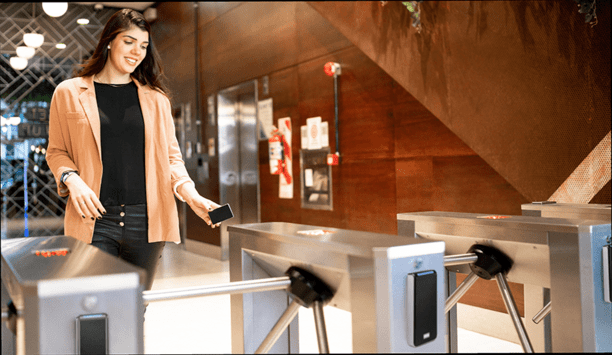
The truth behind 9 mobile access myths
Download

